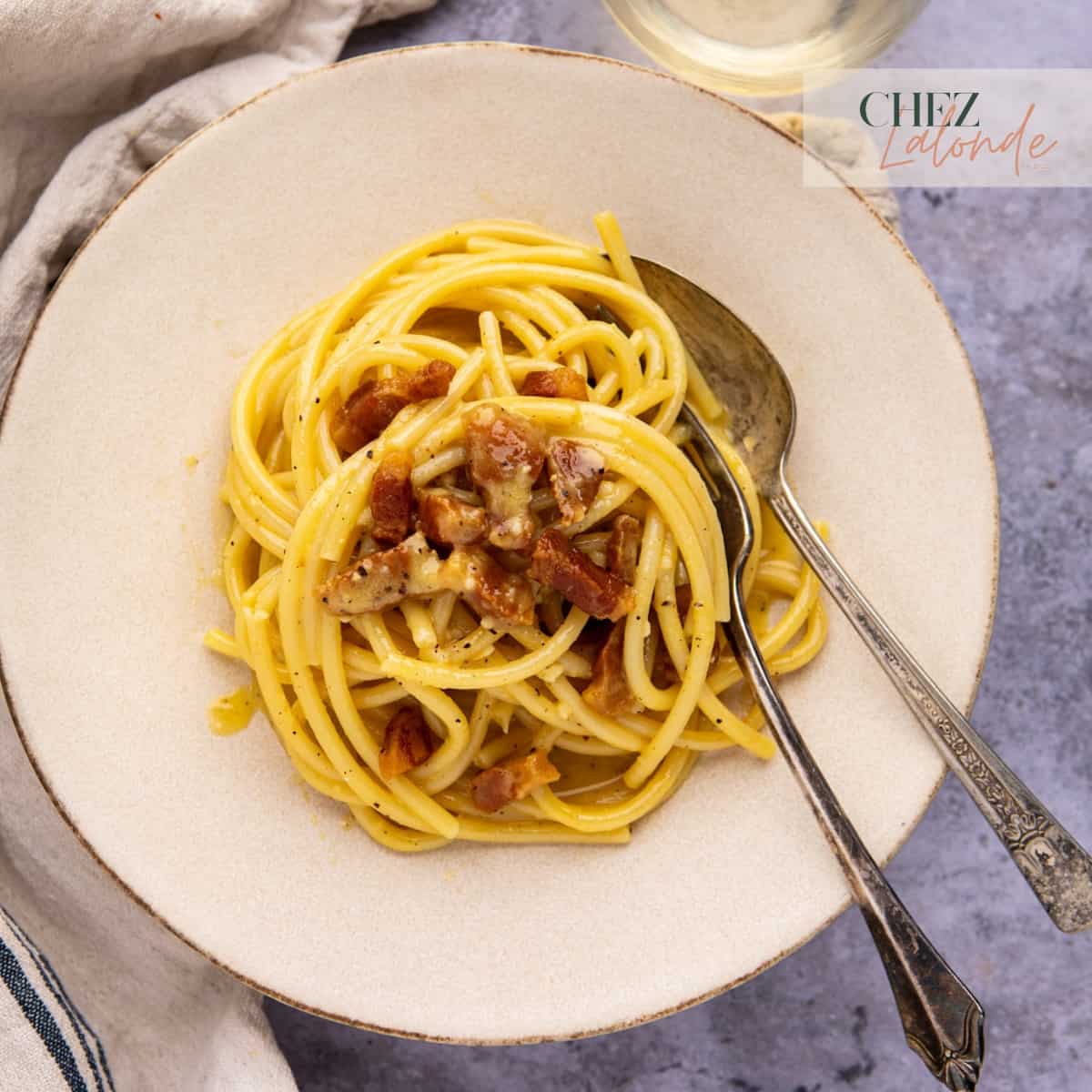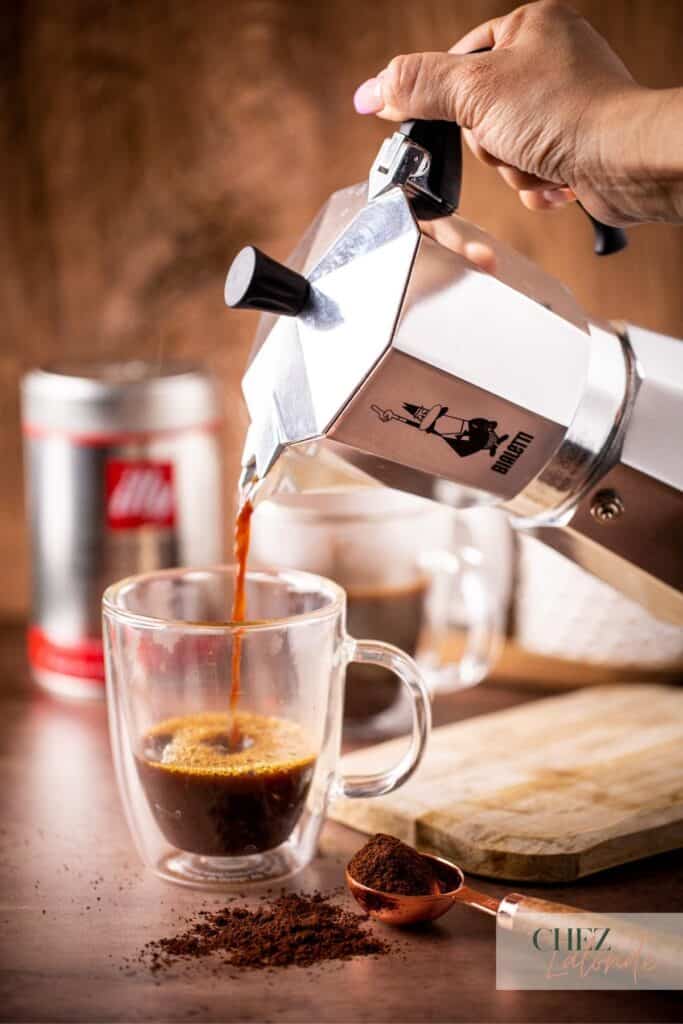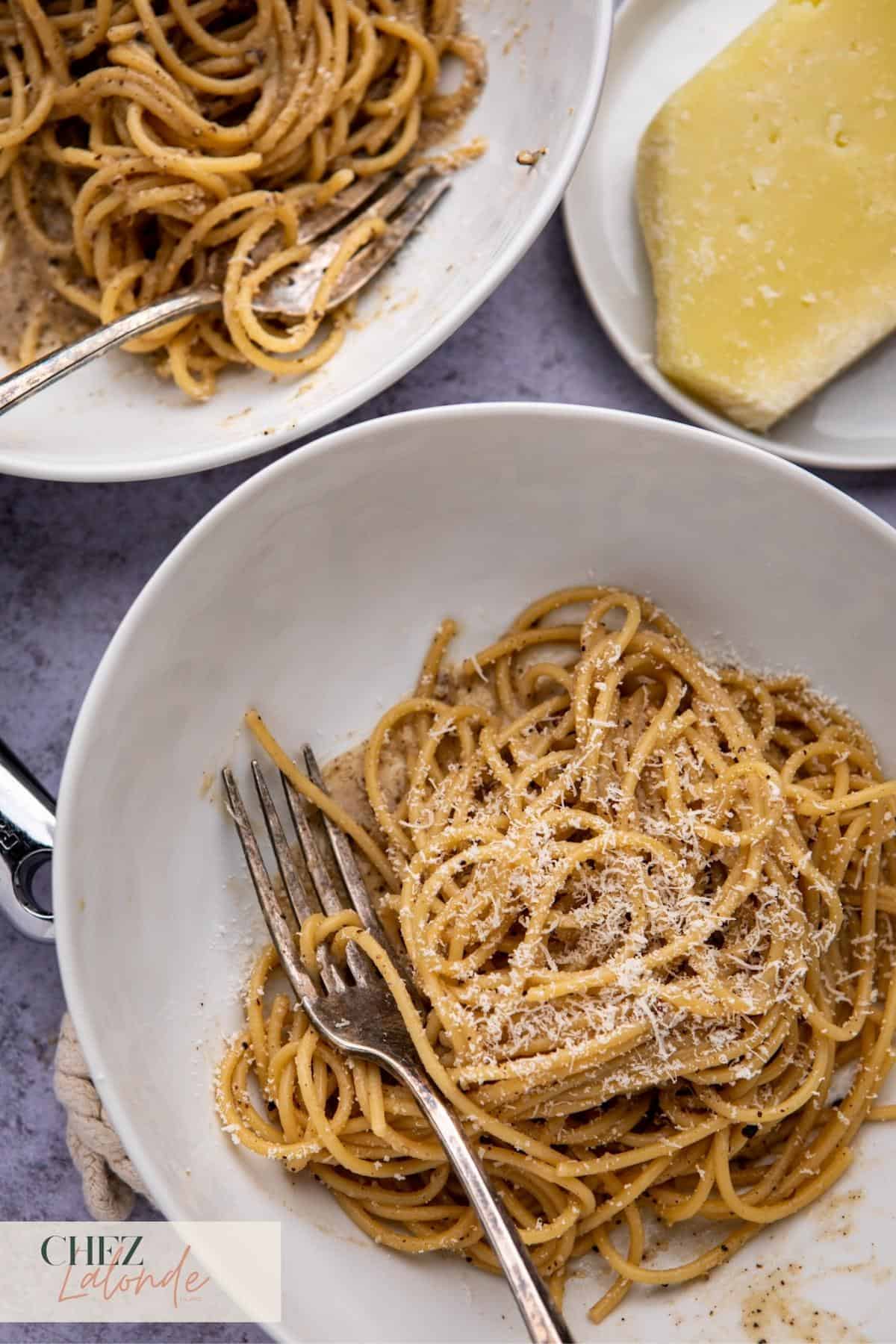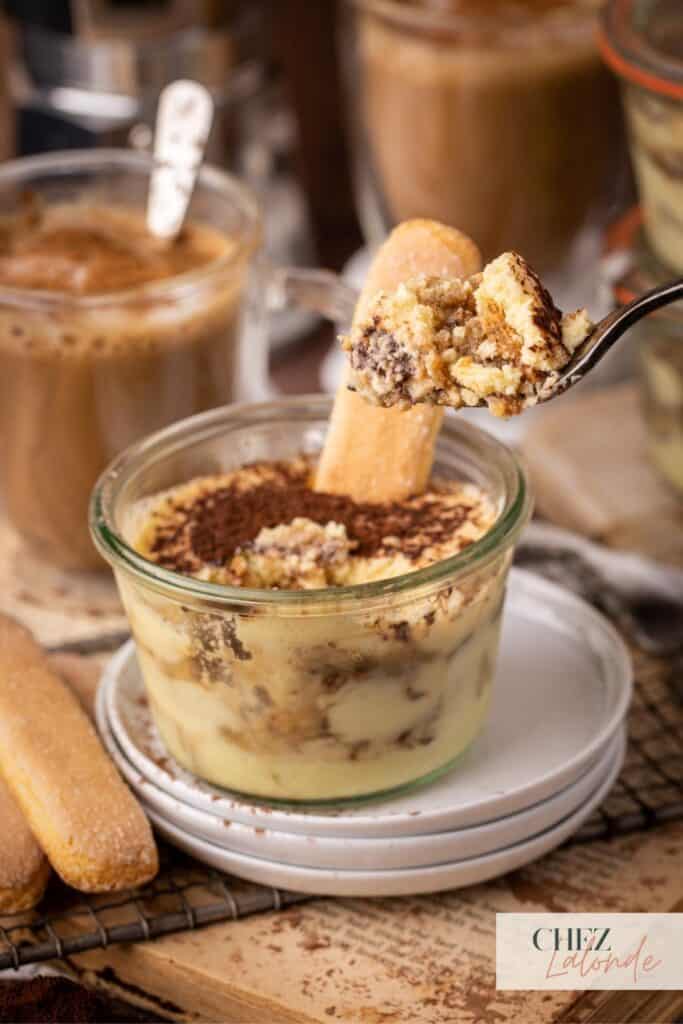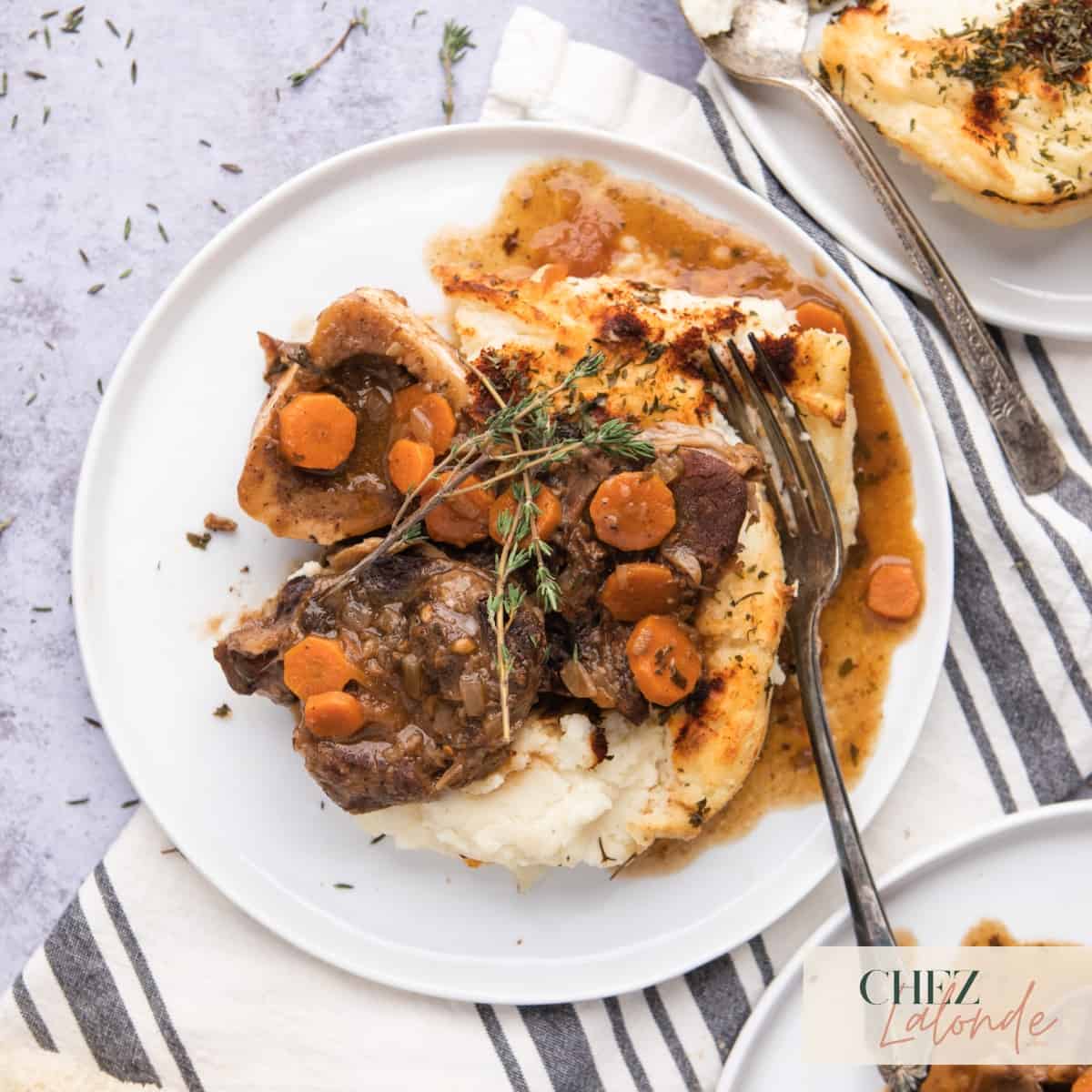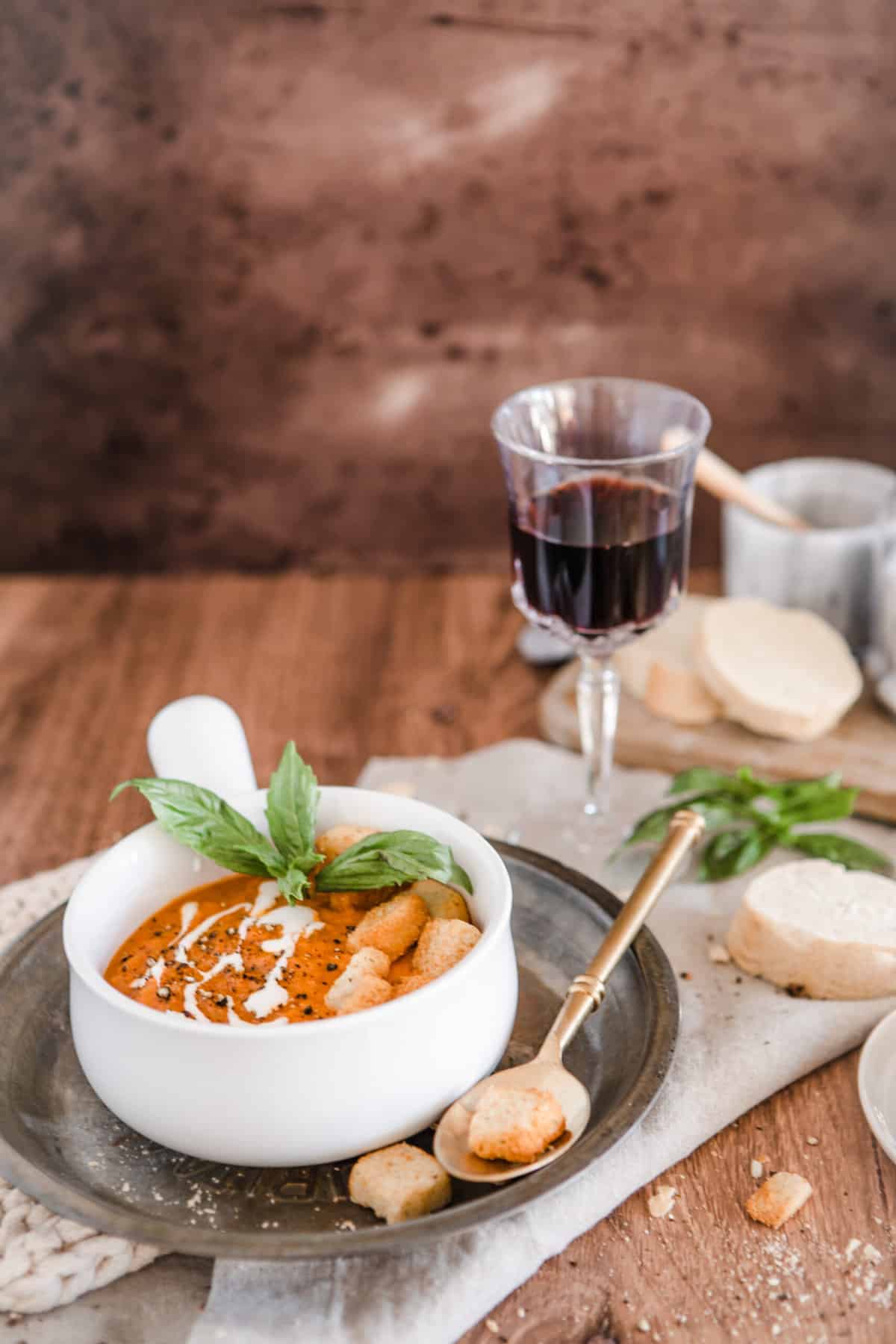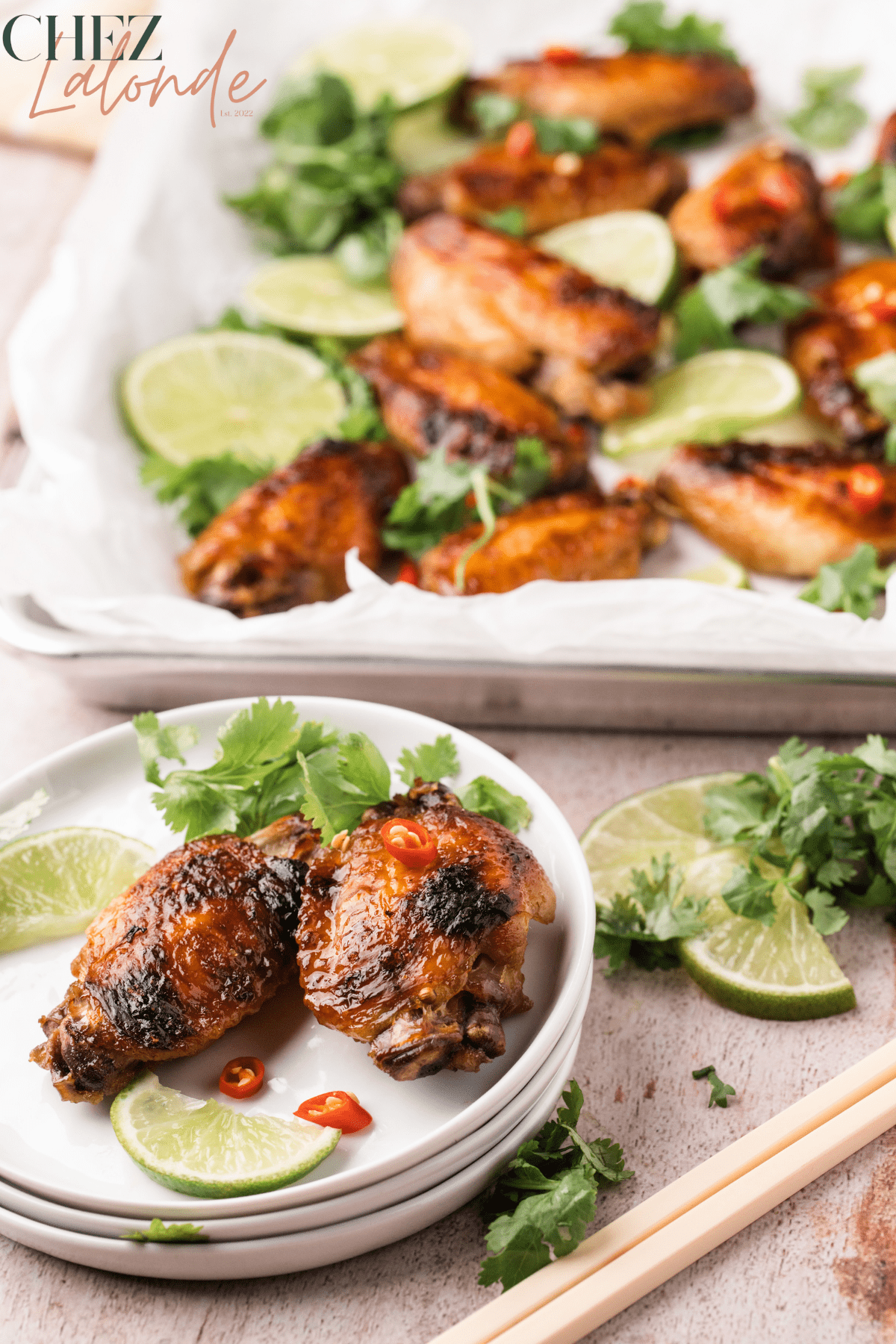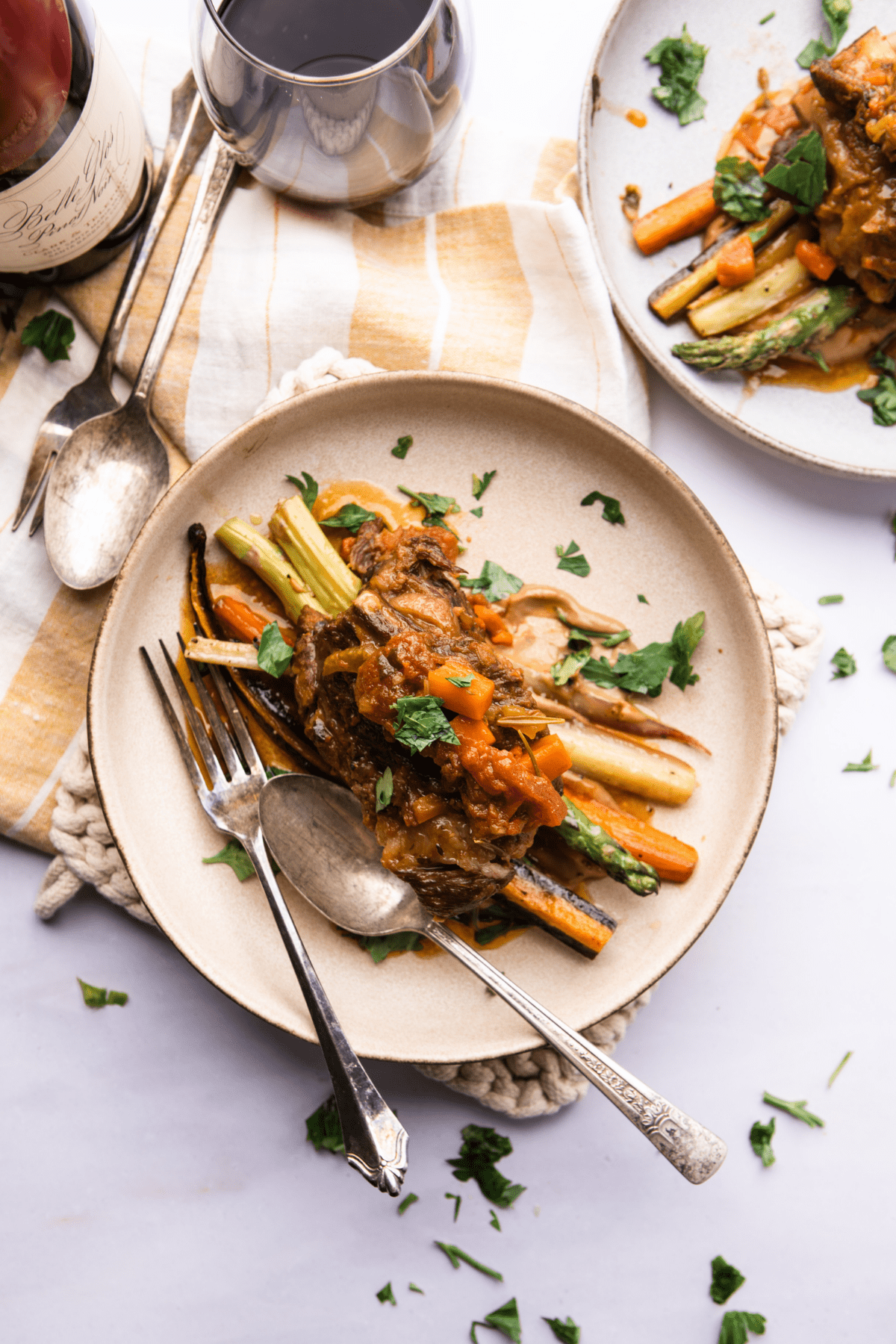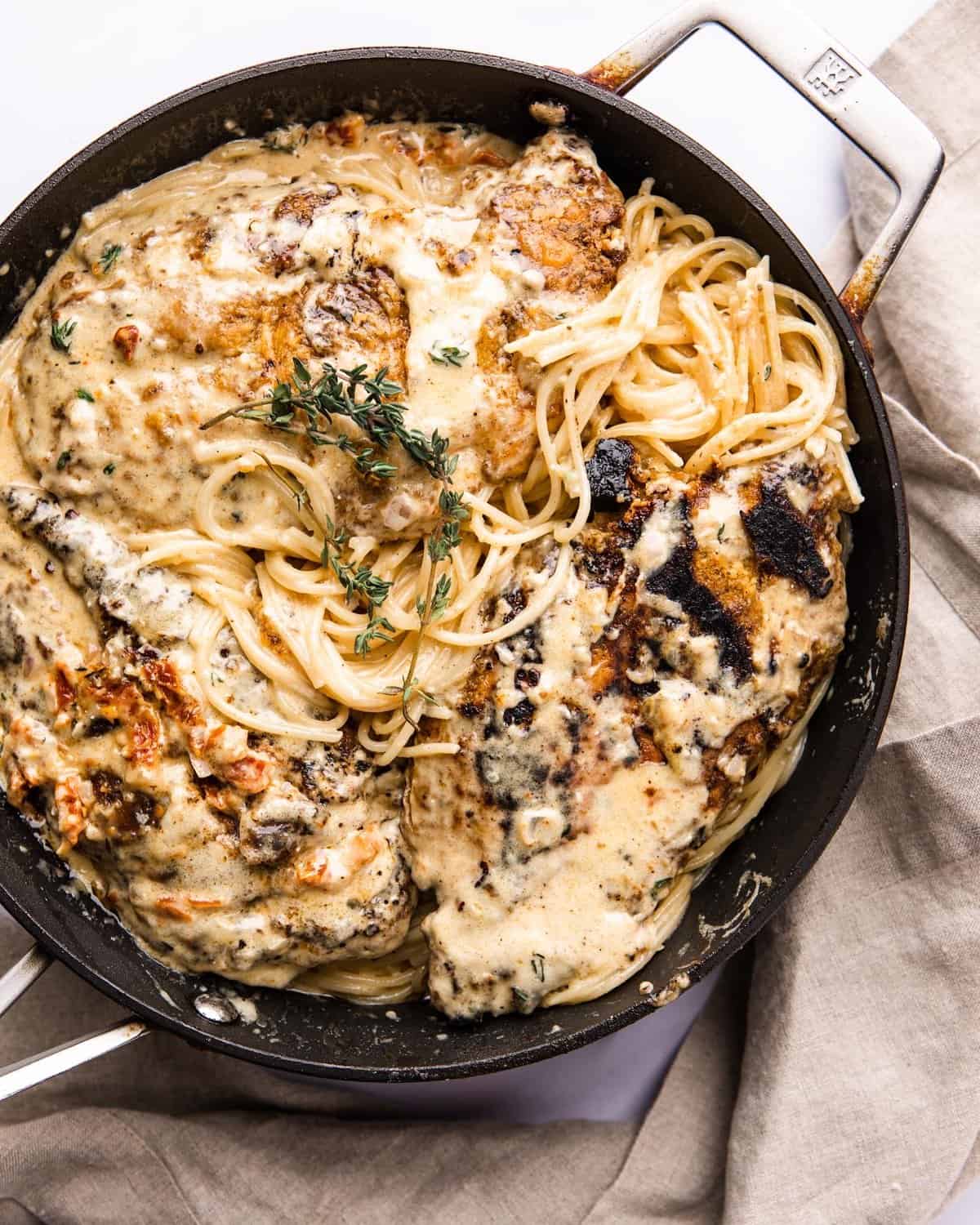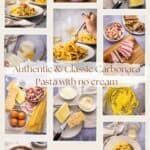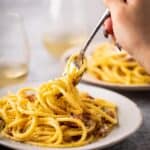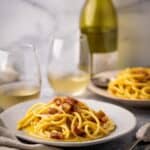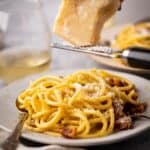Authentic And Classic Carbonara Pasta With No Cream
Imagine savoring the rich, velvety flavors of a classic Italian carbonara made with six simple ingredients without any cream. This traditional Roman pasta dish has been delighting the culinary world for centuries, and in today’s post, you can learn how to make it yourself with my authentic recipe and expert tips. This classic dish will transport you straight to the heart of Rome.
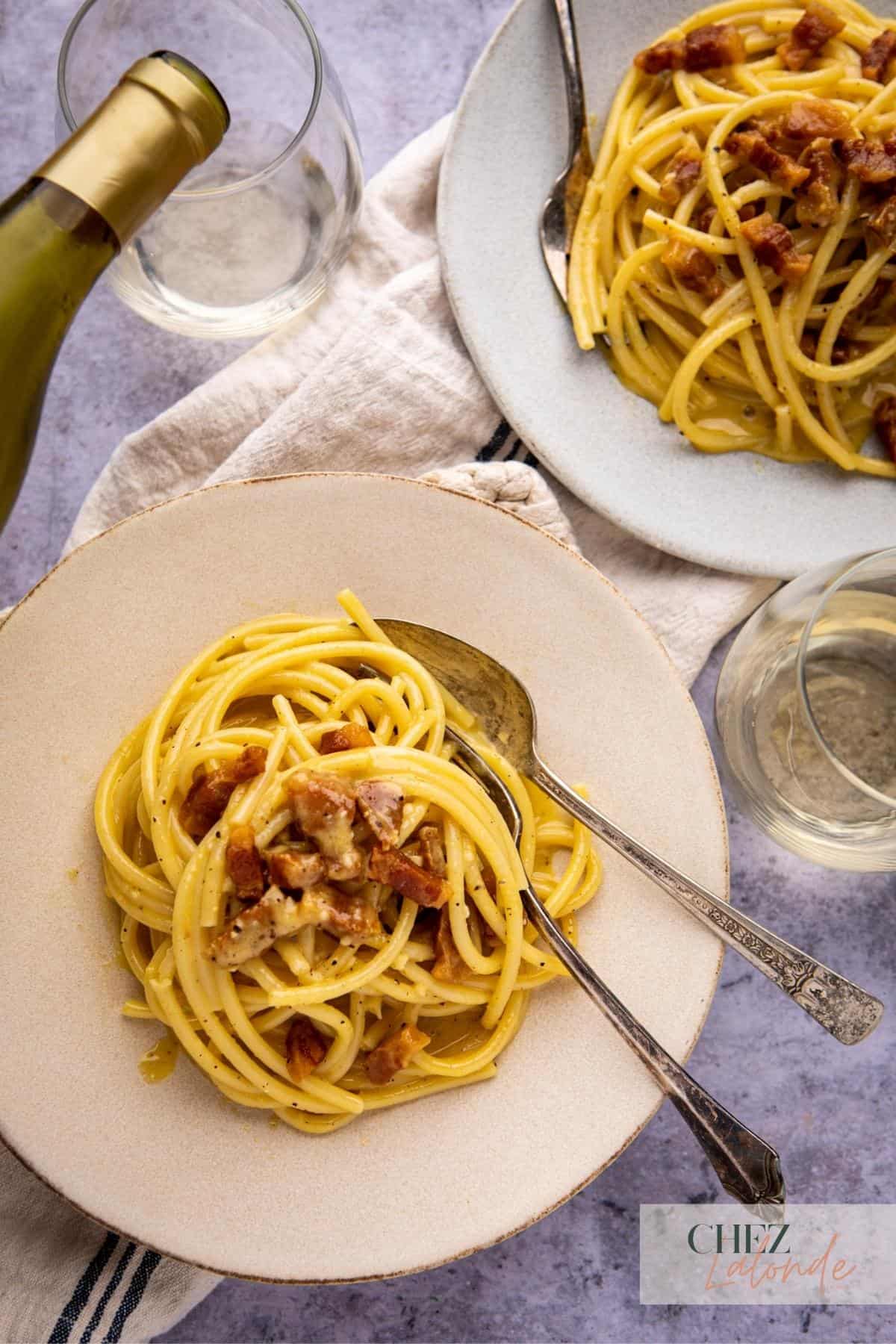
Disclaimer Notice: This website contains affiliate links. If you make a purchase through these links, I may earn a commission at no extra cost to you. I only endorse products or services I believe will be valuable to my readers. I appreciate your support.
In my previous posts, I’ve introduced various pasta dishes that are more Americanized, such as Spaghetti with meat Sauce, Cacio e Pepe pasta, and Chicken with Sun-Dried Tomato Pasta. Today, I am shifting gears and introducing you to an authentic Italian pasta recipe: The legendary Carbonara Pasta. In contrast, many of us may have tried the American-style carbonara at chain restaurants like Olive Garden or Maggiano’s Little Italy. Their pasta is flooded with cream, chicken, mushrooms, green peas, and fatty bacon.
However, do you know the authentic Italian carbonara recipe does not include cream?
In this blog post, I will share how Italians prepare their version of Carbonara pasta. This hearty and delicious dish will undoubtedly impress, especially if you enjoy a cozy date night at home with your loved ones.
Recipe Snapshot
EASE: Quick and easy date night meal.
PROS: You got a taste of Italy right at home.
CONS: This dish gets cold quickly.
WOULD I MAKE THIS AGAIN? For sure, especially on date night!

What is Carbonara?
Carbonara is a classic Italian pasta dish that originated in Rome. It is made with simple ingredients: eggs, pecorino Romano or Parmigiano Reggiano cheese, guanciale (cured pork jowl), black pepper, and spaghetti or other long pasta. The eggs and cheese are whisked together to form a rich and creamy sauce that coats the pasta, while the guanciale adds a salty and savory flavor. Contrary to popular belief, authentic carbonara does not contain cream.
What are the history and origins of Carbonara?
There are many stories and conspiracy about the history of this dish. The exact origins of the Carbonara pasta are somewhat unclear, with various theories and legends surrounding its creation; here is what I researched and learned:
- The word “Carbonaro” means “Charcoal burner” in Italian. Many believe it was a combination of eggs, bacon, and cheese to create a hearty meal for Italian charcoal workers that would give them energy for a long workday.
- Another story was about during the latter part of WWII, the markets in Rome were flooded with food brought in by the US and UK allied forces. These soldiers brought familiar food such as bacon and powdered eggs to Italy; some soldiers combined their food with local cheese and pasta to create a makeshift meal. What an interesting, fun fact, right?
Regardless of its origins, the Carbonara pasta quickly became a popular dish throughout Italy and has since become a classic staple of Italian cuisine. It is particularly associated with the Lazio region of central Italy, where it is believed to have originated.
What is the difference between Italian Carbonara and American Carbonara?
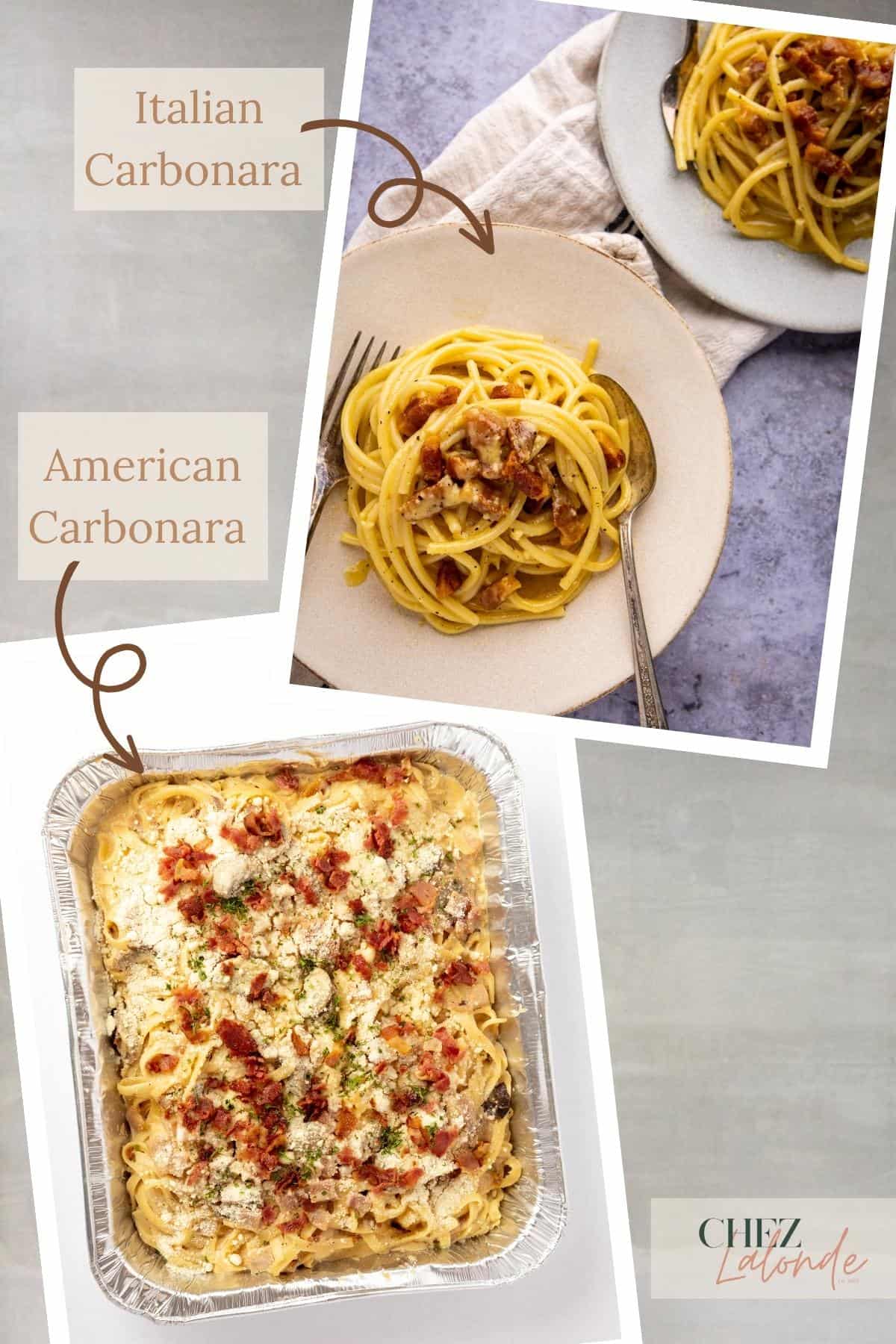
- Italian Carbonara – The authentic Italian Carbonara pasta has eggs, finely grated Pecorino Romano cheese (Sheep cheese), and Guanciale (Cured hog jowl). The creaminess of the sauce doesn’t contain cream. Instead, it is a mixture of cheese and eggs. For the original recipe, the cured pork provides the necessary fat to make the sauce rich and flavorful. Adding cream will dilute the flavors and change the texture of the dish.
- American Carbonara – The American version of Carbonara often includes cream and other ingredients such as chicken, mushrooms, bacon, and parmesan cheese. Italian chefs have explained that Americans are not used to having raw eggs in their cuisine. Making traditional Carbonara requires more time and skill to temper raw eggs with pasta water to prevent scrambling carefully. Using a cream to make the pasta creamy is easier and more appealing to American tastes.
What makes this pasta recipe stands out?

Incorporating two kinds of cheese
I have tested this recipe numerous times. In the traditional way of making this pasta, Italians only use Pecorino Romano cheese. However, I found that mixing Parmigiano Reggiano and Pecorino Romano in Carbonara is a better idea because it creates a perfect balance of flavors. The sharpness and saltiness of the Pecorino Romano complement the slightly sweet, nutty, and rich flavor of Parmigiano Reggiano, creating a unique and delicious taste profile that balances the overall flavor profile of the dish. Additionally, using both types of cheese allows for a creamier texture without the need for cream.
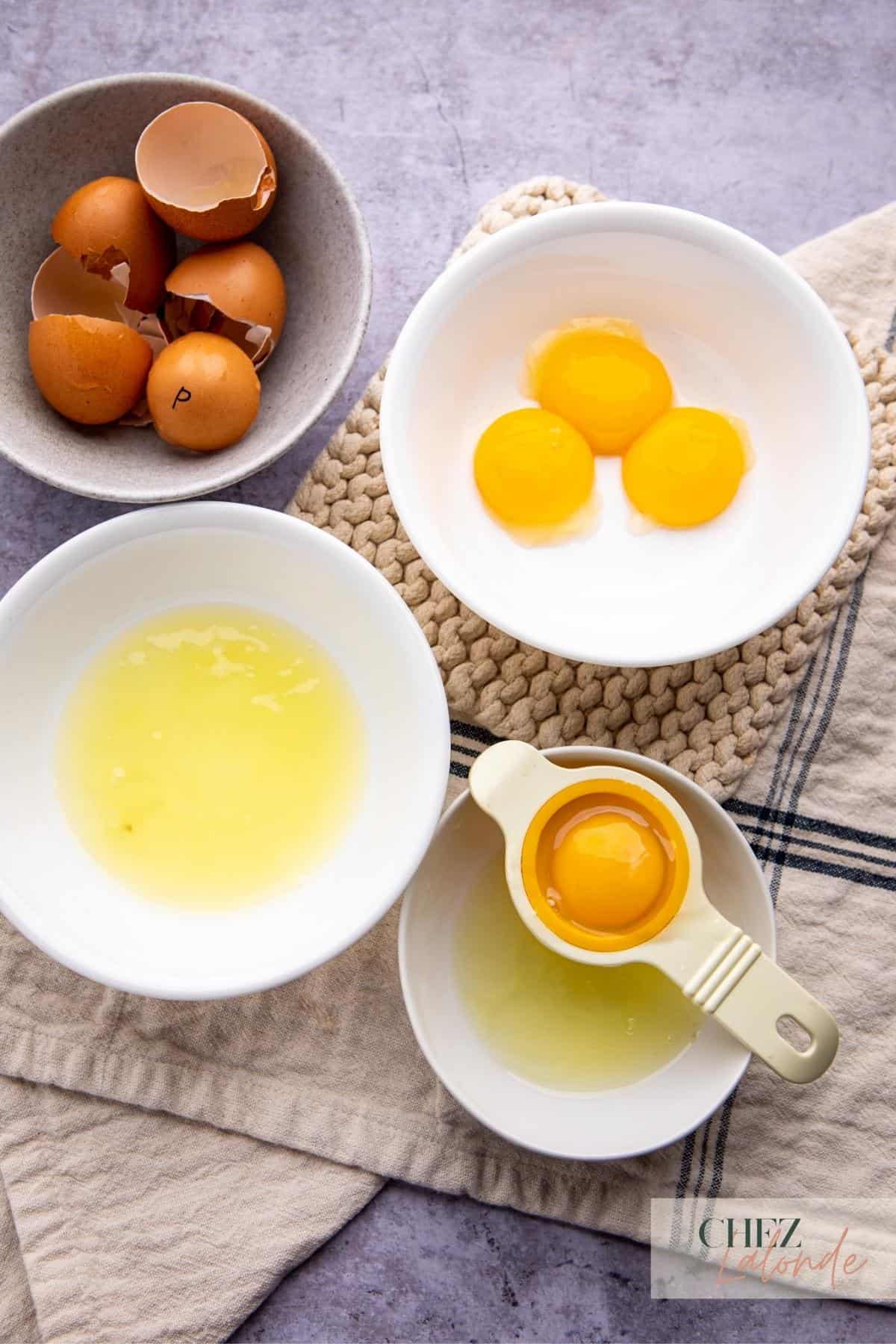
Separating egg white and egg yolk
I picked up a valuable trick from my friend’s YouTube channel, KK Life in Italy. Her guest, a famous Italian chef, demonstrated his secret method for making a creamy yet airy and light carbonara sauce. Instead of using only egg yolk or mixing the whole egg with cheese, he beat the egg yolk with finely grated cheese and folded in the soft peak beaten egg white. This technique resulted in a super creamy, fluffy egg and cheese sauce that wasn’t too dense or dry. Incorporating this little hack into your carbonara recipe will take your pasta dish to the next level!
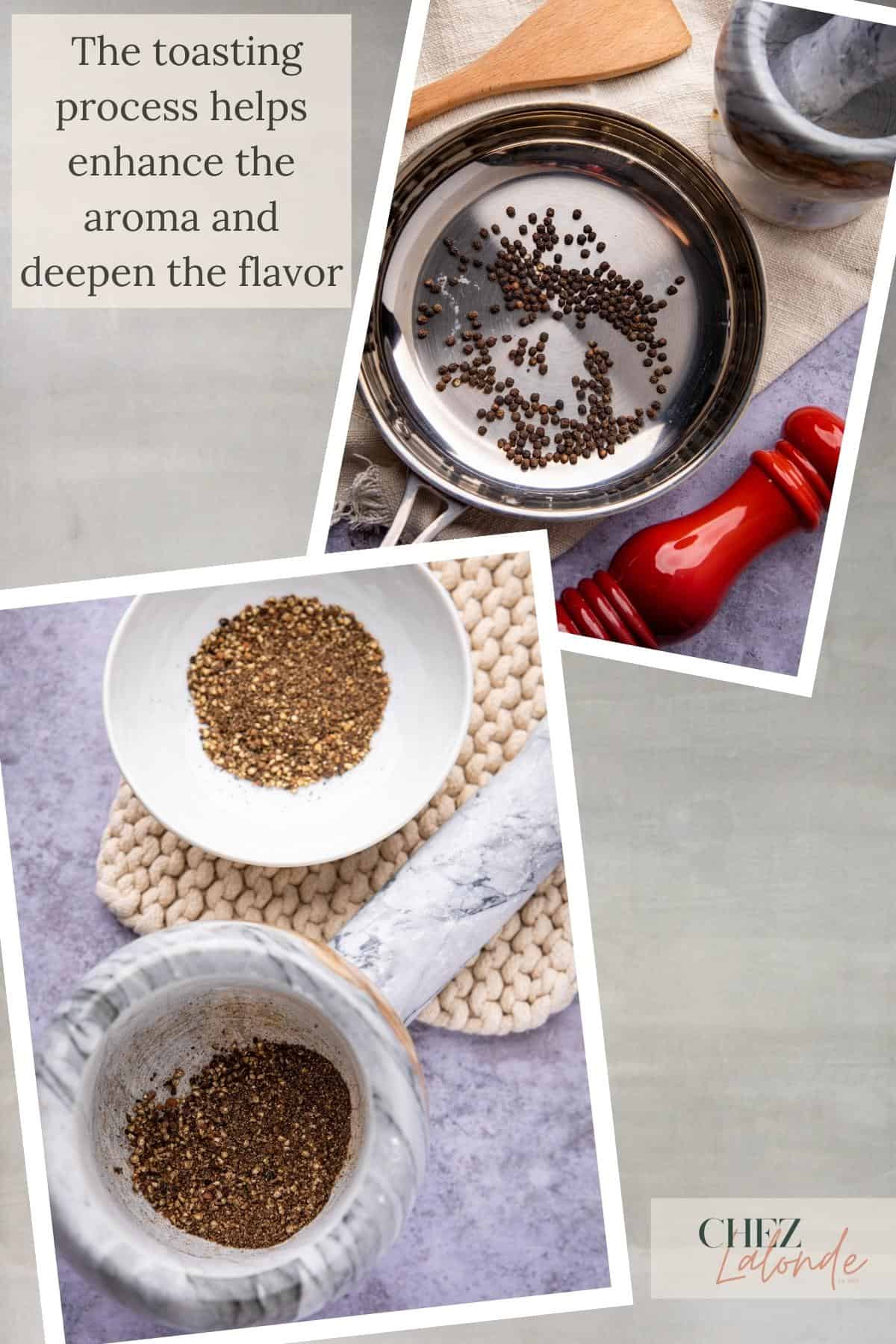
Toasting the black peppercorns
I love toasting half a tablespoon of black peppercorns in a pan, then crushed before combining them in the egg and cheese sauce. Toasting them prior can enhance the dish’s flavor, intensifying the pepper’s aroma and giving it a more complex and nuanced taste.
Carbonara Ingredients Overview
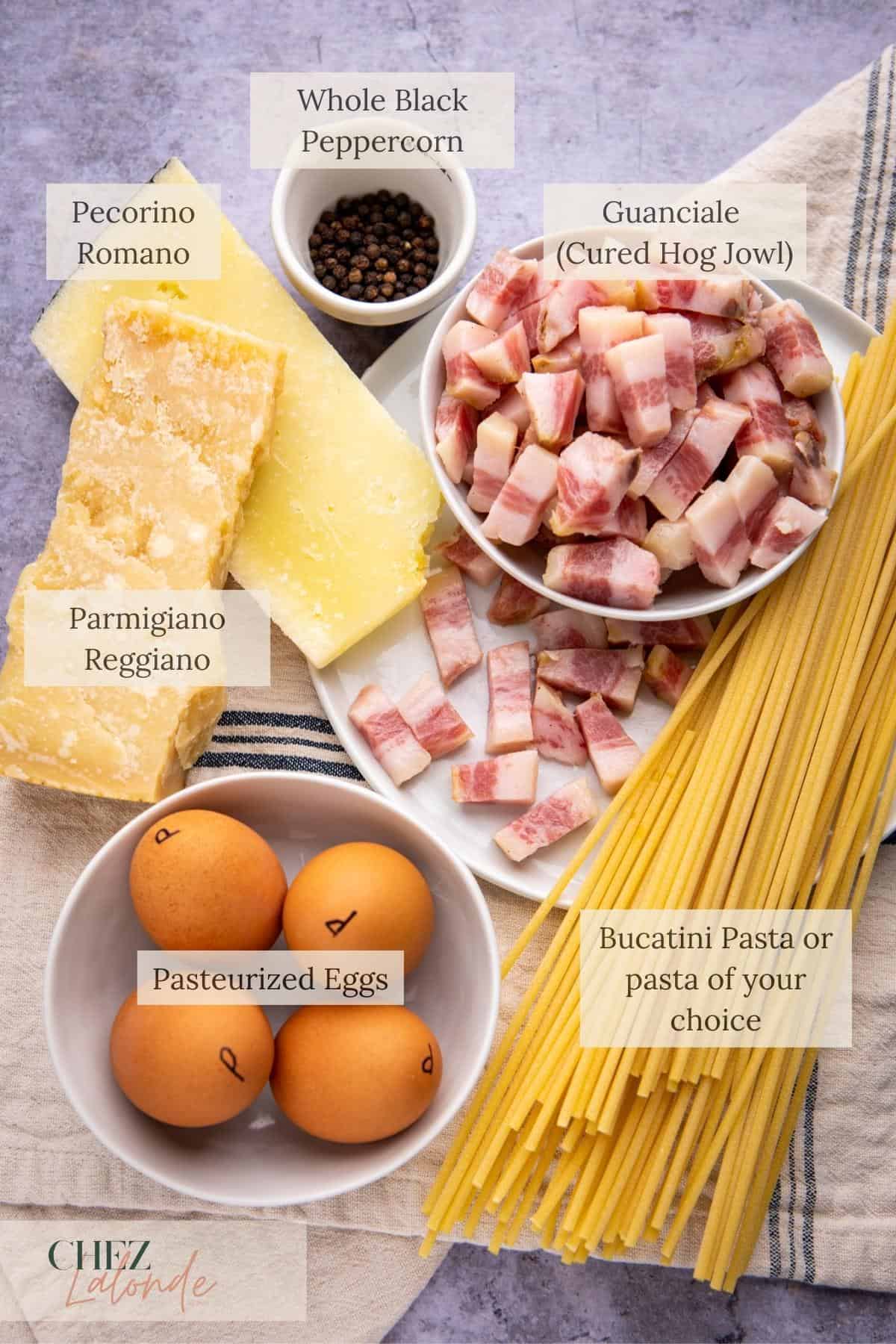
For this recipe, you only need six simple ingredients: pasta of your choice, Guanciale (Italian Hog Jowl), Pecorino Romano, Parmigiano Reggiano, black peppercorn, and pasteurized eggs. Don’t worry if you’re unfamiliar with all the ingredients; I’ll break it down for you and give you an explanation of each ingredient and its purpose in the recipe.
Let’s get started!

Pasta of your choice
I highly recommend you use any rounded-shaped pasta, such as the classic spaghetti or bucatini, with a great chewy texture or rigatoni.
In my recipe today, the pasta I used was Bucatini. Bucatini is a type of pasta similar to spaghetti, but it is thicker and has a hollow center like a straw.
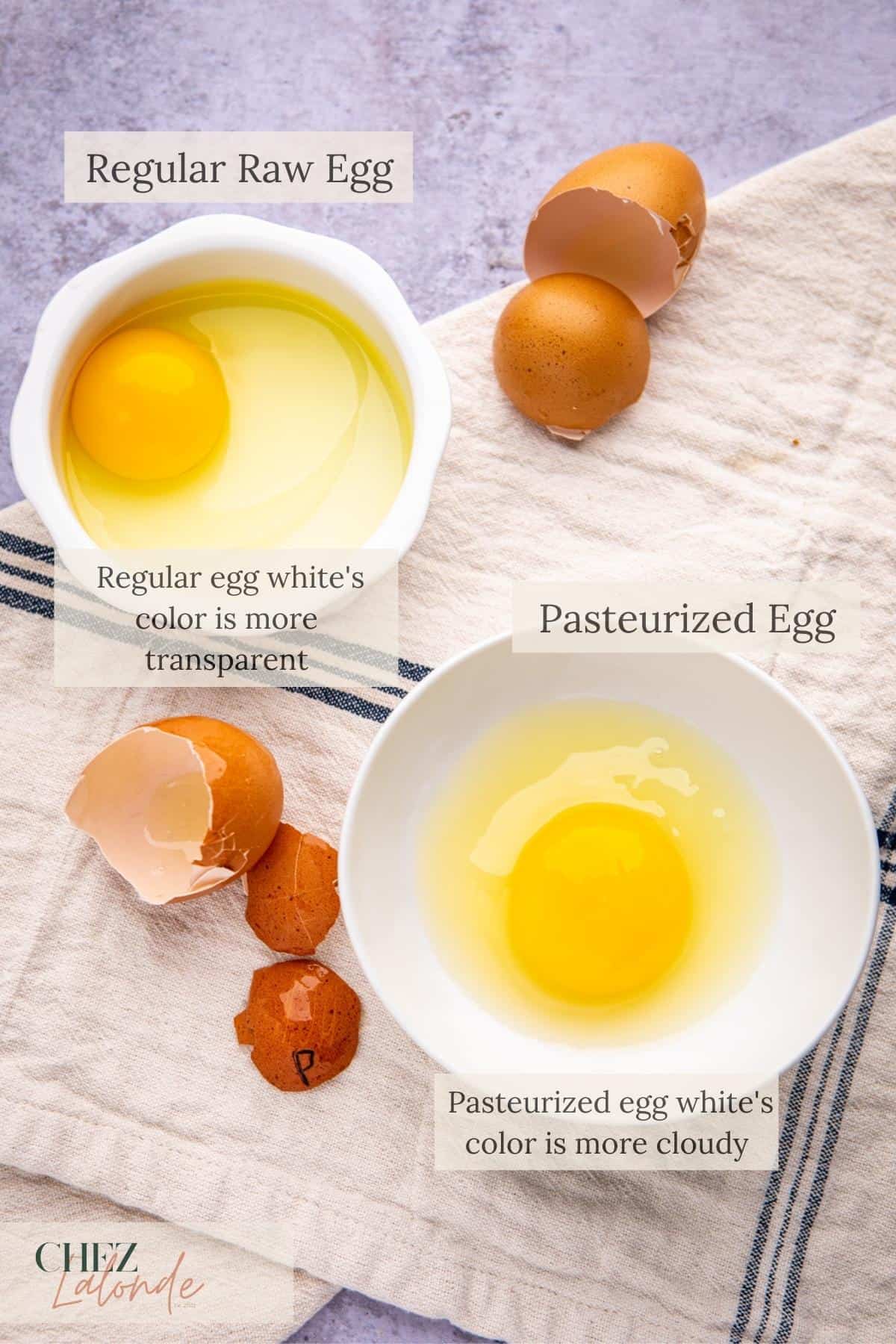
Pasteurized eggs
For safety, use “Pasteurized eggs” that have undergone a special heating process to sterilize any potential microbial growth. This will allow you to consume raw eggs without any concerns. We’ll separate the egg yolks and whites, and through this culinary hack, you’ll discover how it helps make the pasta creamy. Keep reading to find out more.
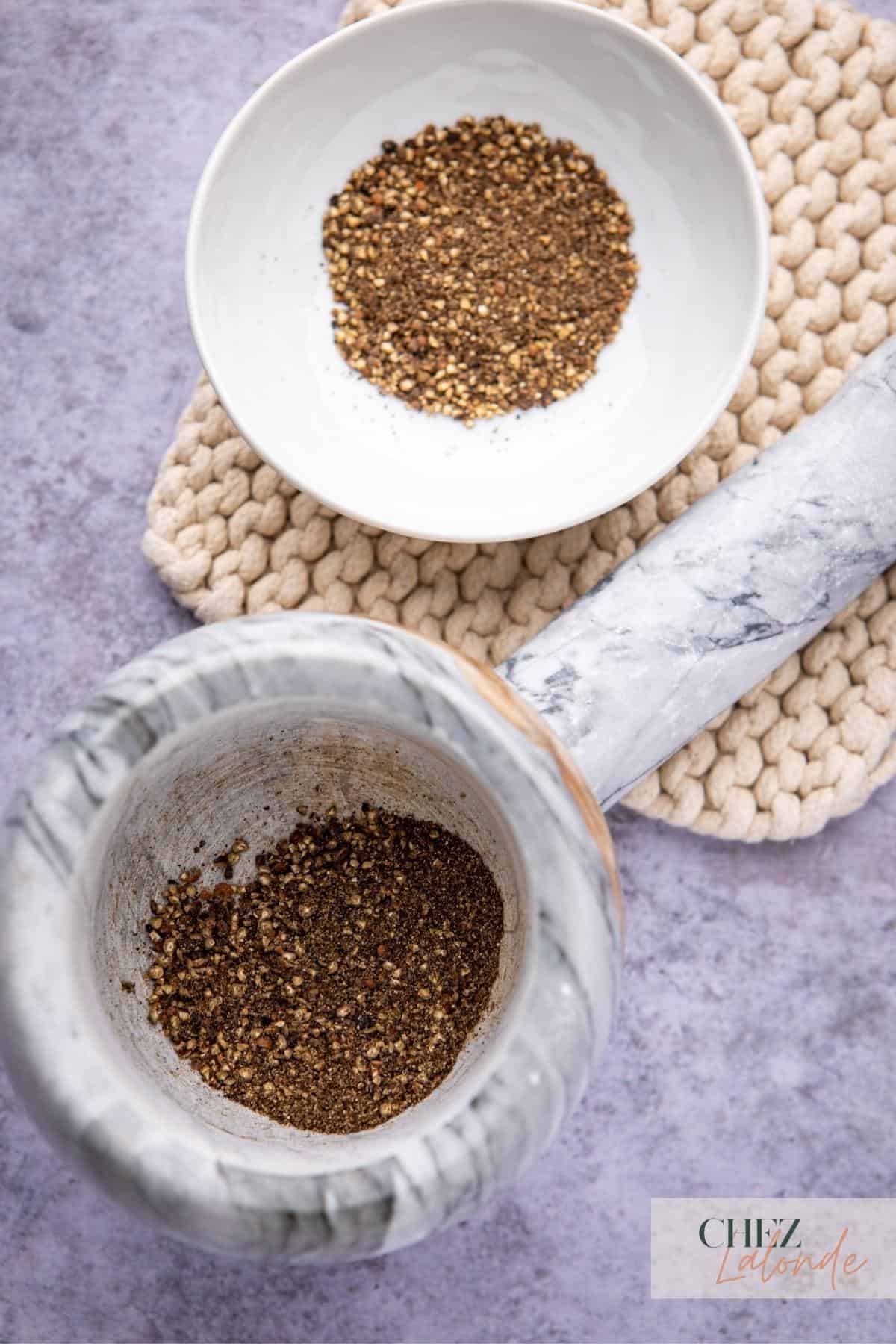
Whole black peppercorns
You can’t make Italian pasta without good black peppercorns. We will toast them on low heat in a saucepan for 30 to 45 seconds or until fragrant, then crush them. The toasting process helps release aroma and add depth of flavor to the pasta.
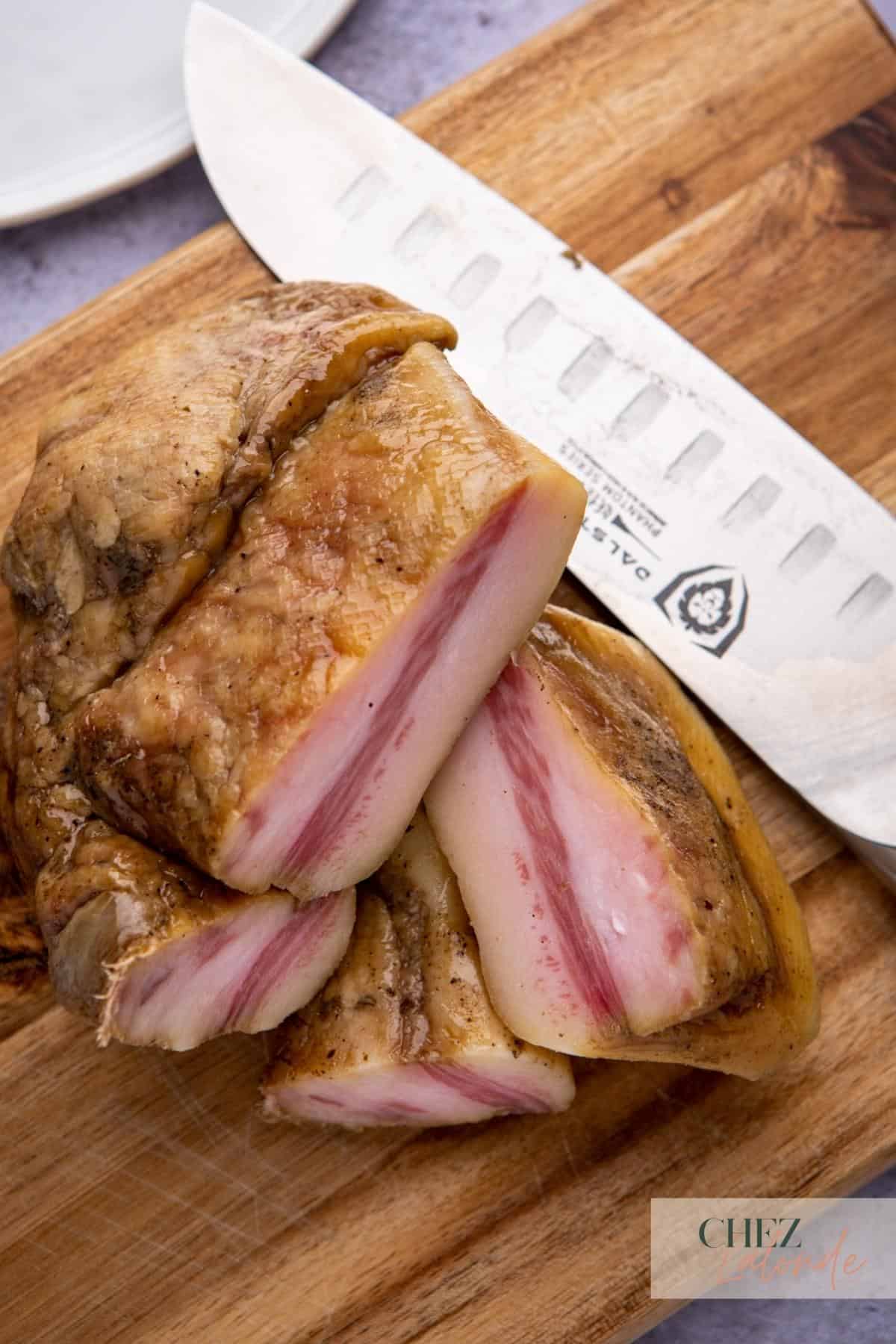
Guanciale
What is Guanciale?
Guanciale is an Italian cured meat from the pig’s jowl or cheek. It is a key ingredient in carbonara, and another two Roman pasta called “Amatriciana” and “Gricia” This cured meat is known for its rich and savory flavor and texture. Guanciale is often considered superior to cured meats like pancetta or bacon due to its unique flavor profile and ability to add depth to dishes. It is an essential ingredient in today’s Italian carbonara recipe.
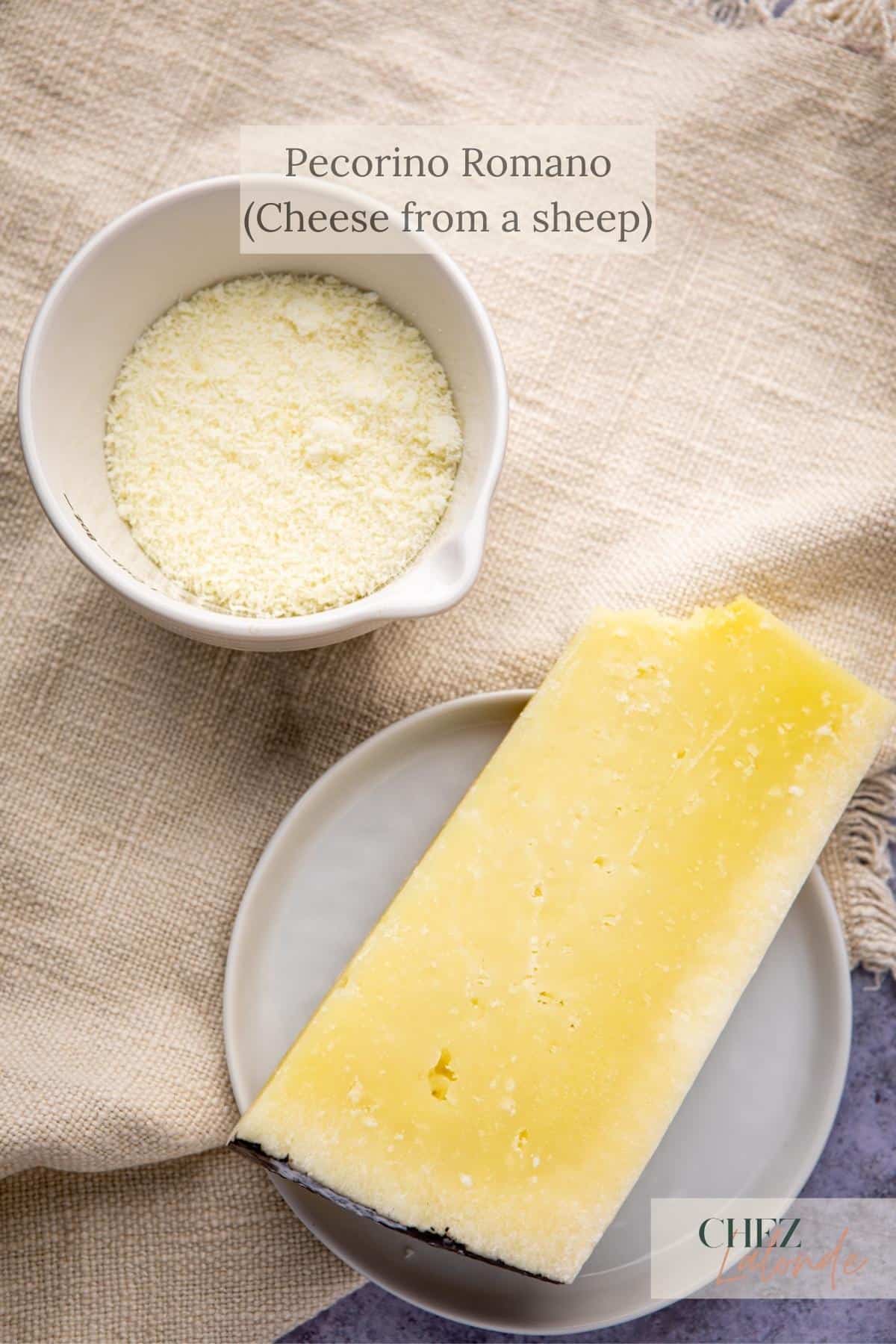
Pecorino Romano
What is Pecorino Romano?
Pecorino Romano is a hard, salty Italian cheese made from sheep’s milk. It has a savory, sharp, and distinctive flavor and is commonly used in traditional Roman pasta such as Carbonara, Cacio e pepe, Gricia, and Amatriciana. It is a bit salty compared to Parmigiano Reggiano. Therefore, I mixed both kinds of cheese in my recipe to balance the saltiness.
Is Parmigiano Reggiano the same as Parmesan cheese?
No, they are not the same!!!
I have seen these two kinds of cheese used interchangeably in many recipes, especially here in America, which I need to address so that you are clear on which one to pick at the store.
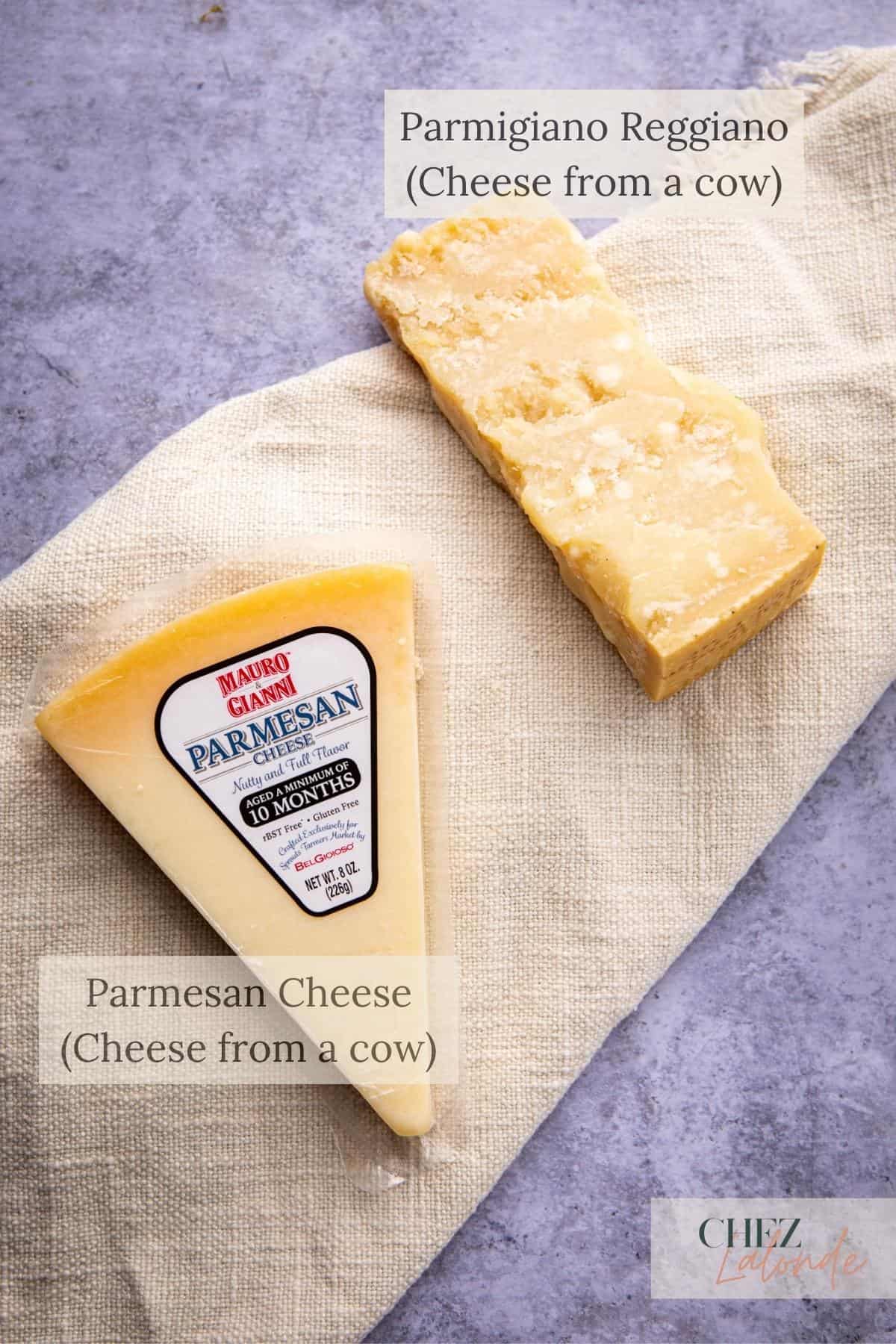
Parmigiano Reggiano
It is a higher-quality specialty cheese made only in the Emilia-Romagna region of Italy. The whole production process is strictly regulated with high standards by the Italians. The cheese was produced with raw, unpasteurized milk from cows fed on grass or hay. And it must be aged for at least 12 months and up to 36 months making it higher quality and more expensive than Parmesan Cheese. You can only find it at higher-end supermarkets or small artisan specialty grocery stores such as Whole Foods or Central Market.
Parmesan Cheese
It is a generic hard granular cheese that can be made anywhere in the world, and the cheese can be made with pasteurized milk without the strict requirement of cow feed. It also has a shorter aging time, and production is not strictly regulated. Therefore, it can be found easily in any supermarket and is more affordable. However, please do not use Parmesan cheese as a substitution in this recipe. In this post, I aim to teach you how to make this Carbonara pasta authentically.
Tips
Substitutions and variations
- Adjust your Cheese ratio – This recipe can use 100% Pecorino Romano or Parmigiano Reggiano cheese. Still, after numerous recipe testing at home, I found that mixing both gives the best flavor. Only using Pecorino Romano can make it too salty, while only using Parmigiano Reggiano can lack a special characteristic. To keep the dish from being too salty, try to use a 20g Pecorino and 40g Parmigiano ratio to keep the total cheese amount at 60g for a 2-person portion. Adjust the ratio to your preference.
- Pancetta or thick American bacon – While browsing some carbonara recipes, I noticed some suggest using pancetta or bacon as a substitute for guanciale. However, after trying out the recipe with pancetta and bacon, I disagree with this. You see, pancetta and bacon are made from cured pork belly, but they lack the rich and distinct flavor that guanciale provides. Plus, their texture tends to be too chewy compared to the crispy guanciale. Trust me, guanciale makes carbonara so special and unique, and trying to replicate its flavor and texture with pancetta or bacon is just not the same.
The Detailed step-by-step guide on how to prepare this pasta dish like an Italian
The following portion is to make two personal portions of Carbonara pasta. Perfect for date night!
Trim and prepare the Guanciale.
Step 1 – Take the guanciale out of its packaging and remove imperfections, such as the skin and any gray discoloration part. Cut the cured meat around half an inch thick and into one to one and a half inches long strips.
(Note* Do not discard the fatty part of guanciale as it adds flavor to the dish. The fat is an essential ingredient that gives the dish its distinct rich taste.)
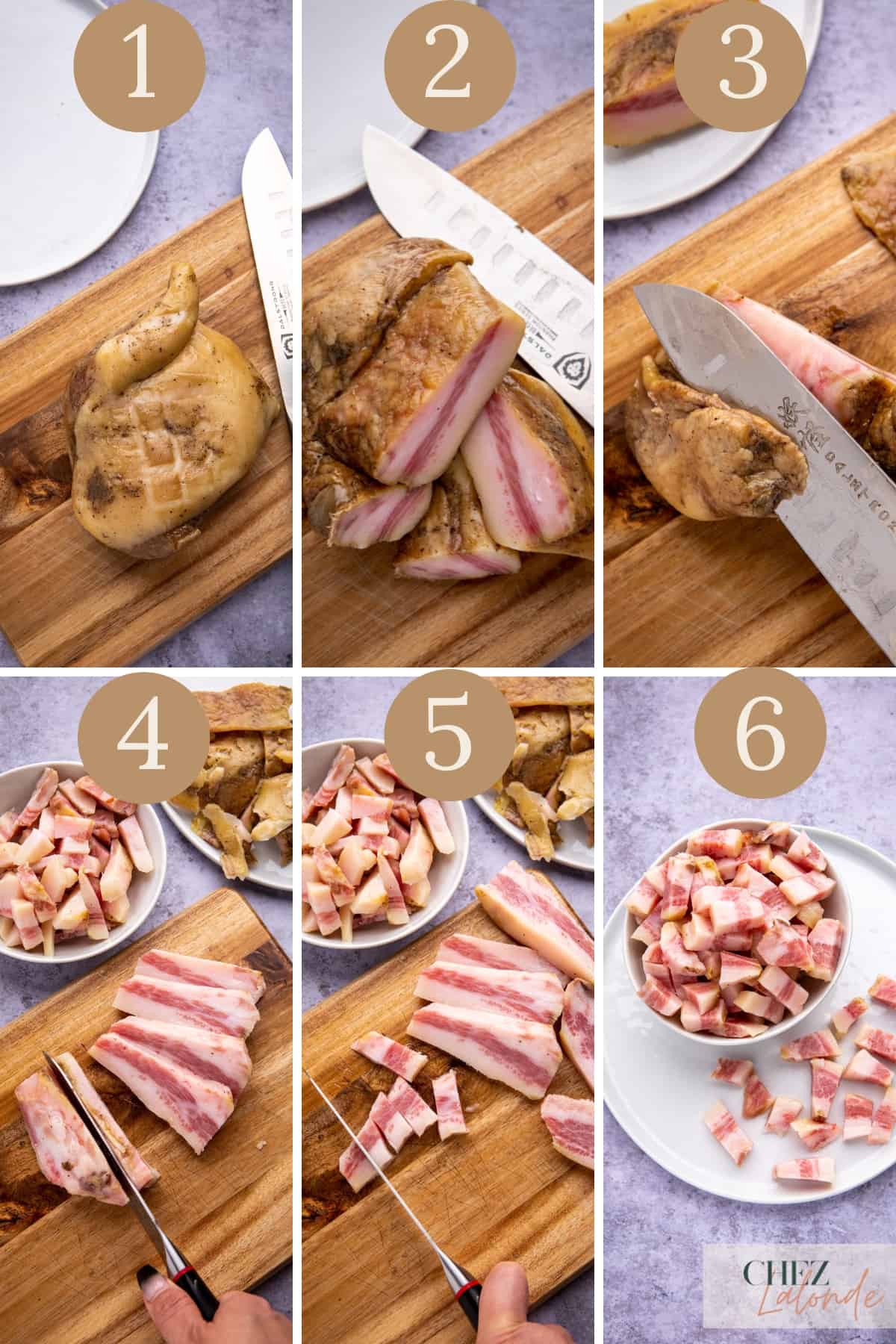
Toast the black peppercorns.
Step 2 – Heat a small frying pan on low heat and add whole peppercorns. Toast the peppercorns for 30 to 45 seconds or until fragrant. You then crush the peppercorns in a mortar and pestle or put them in a ziplock bag, and use a meat tenderizer or rolling pin to crush them.
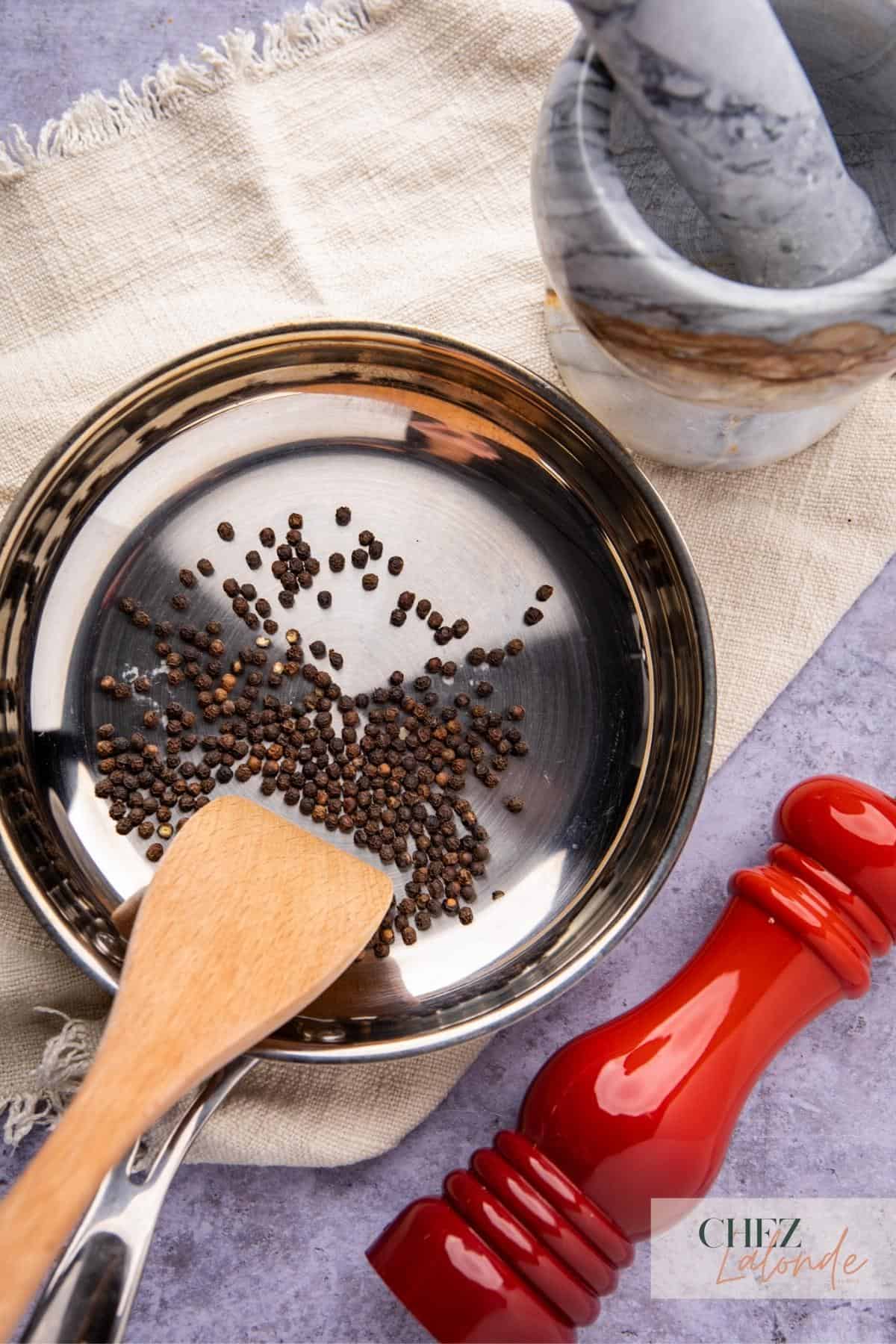
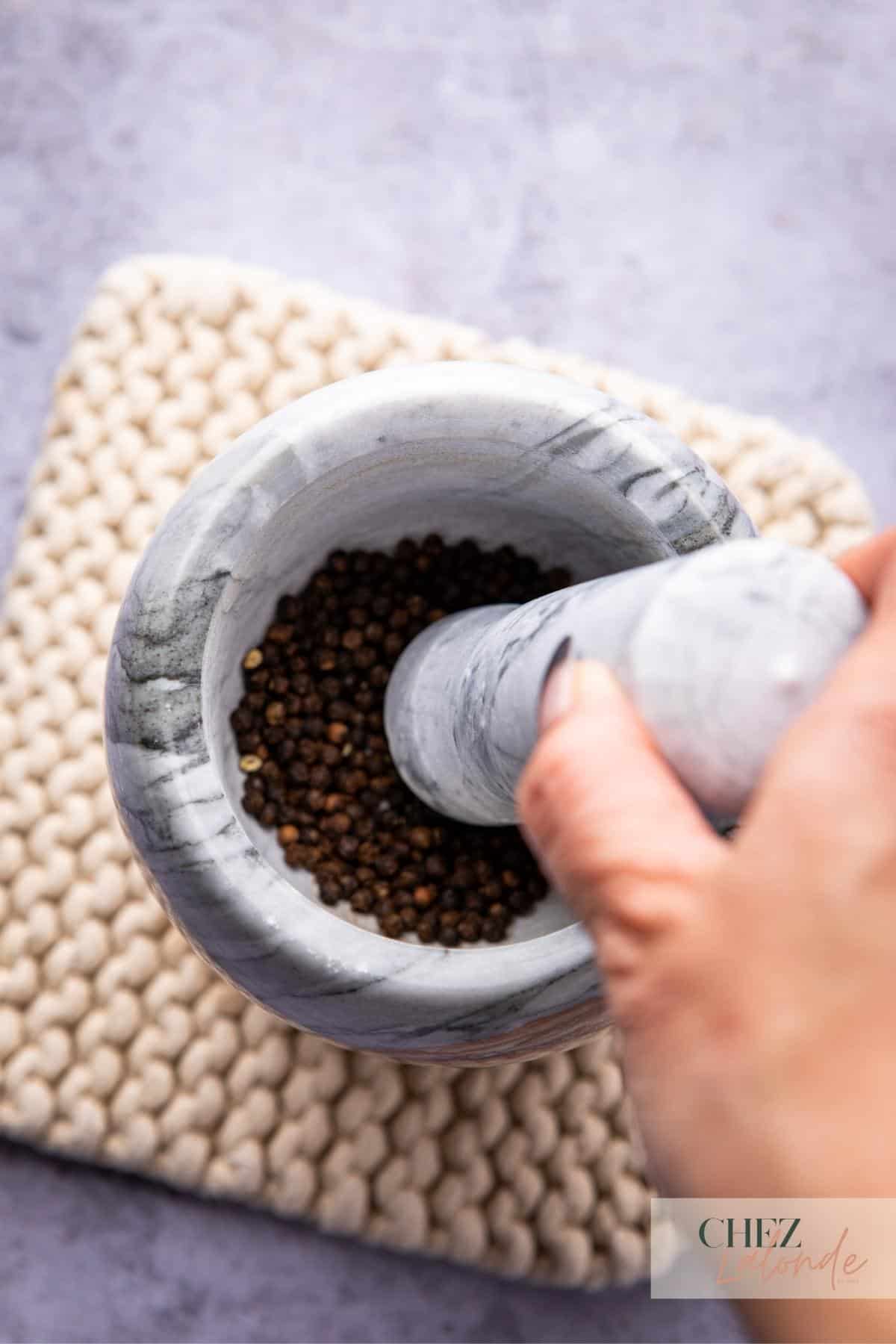

Grate the cheese
Step 3 – Use a Microplane tool to finely grate both Pecorino Romano and Parmigiano Reggiano cheese blocks and use the cooking scale to measure the appropriate quantity needed for the recipe.
(Note* To avoid lumps and ensure that the cheese blends well with the eggs, it’s important to grate the cheese finely)

Prepare the egg sauce.
Step 4 – Separate the four eggs’ yolks and whites once the cheese is grated. We will only use two egg whites and four egg yolks for this recipe, and you can save the remaining egg white for later use in other recipes.
(Note* The ratio for this recipe is two yolks and one egg white per person)
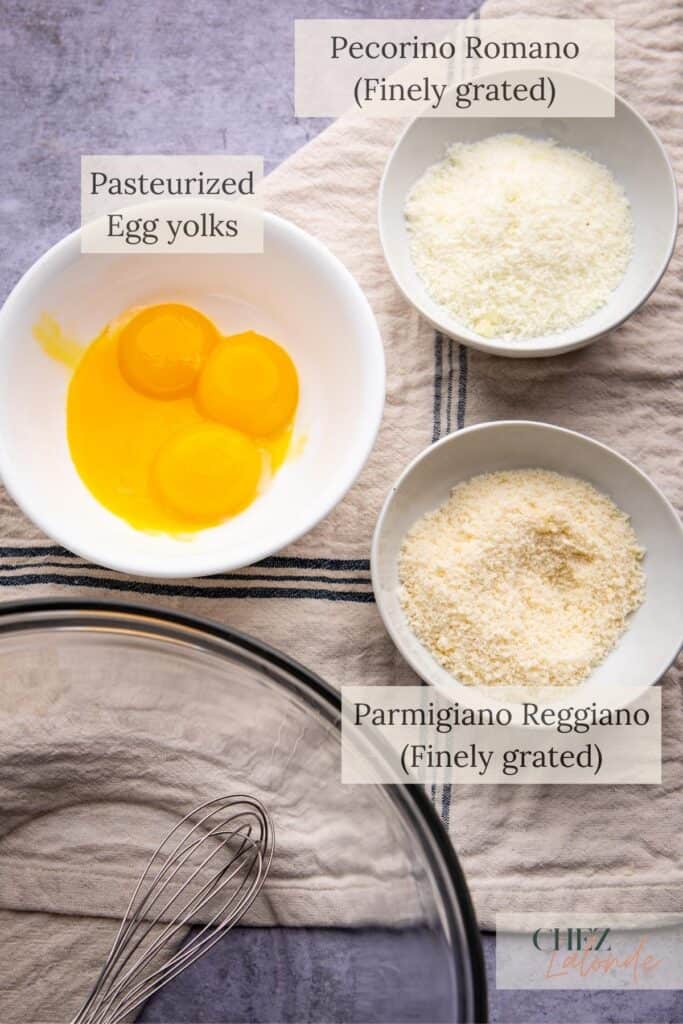
Step 5 – Using a clean bowl, whisk the finely grated Pecorino Romano and Parmigiano Reggiano cheeses together with the separated egg yolks. Mix until it forms a paste-like consistency.
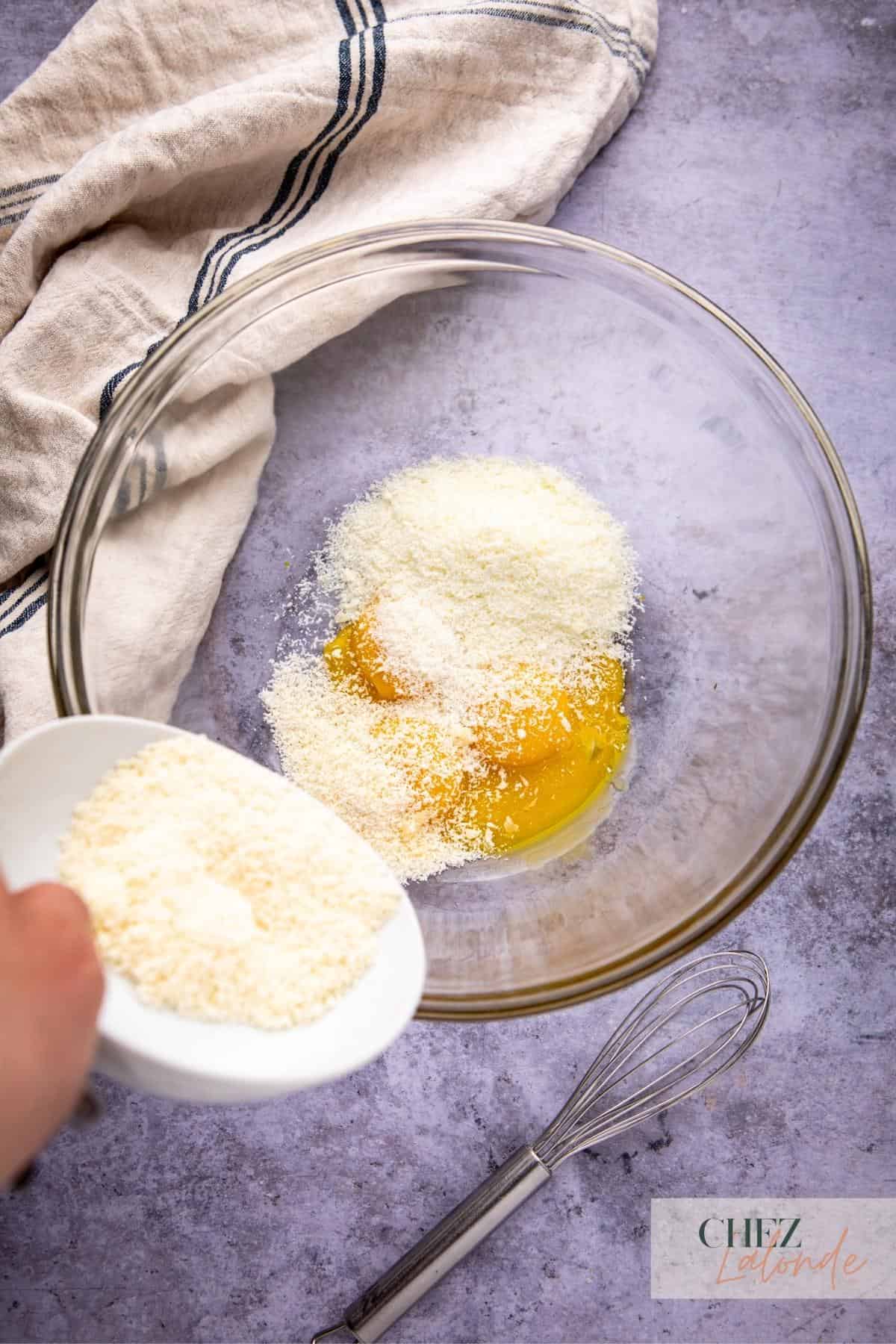
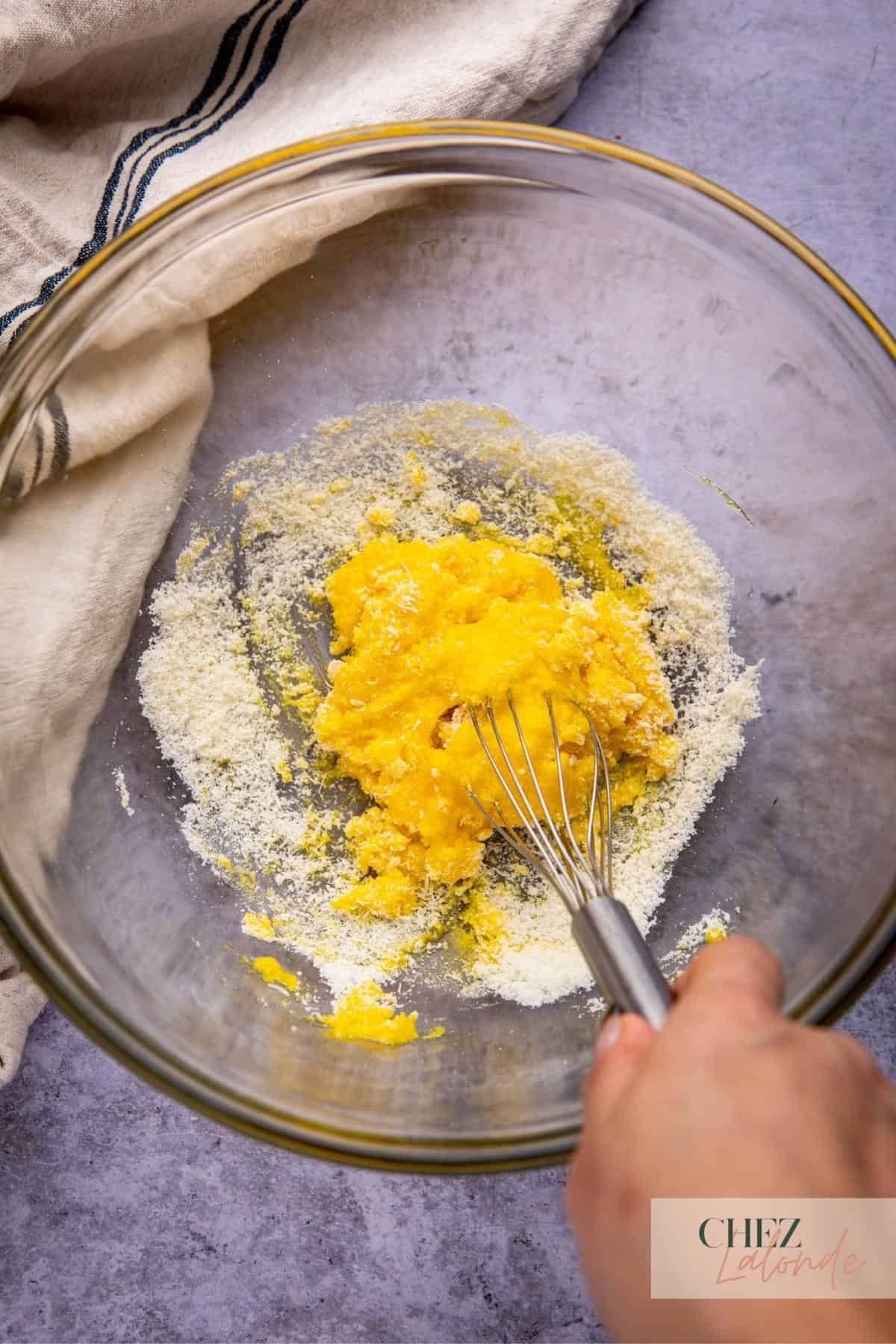
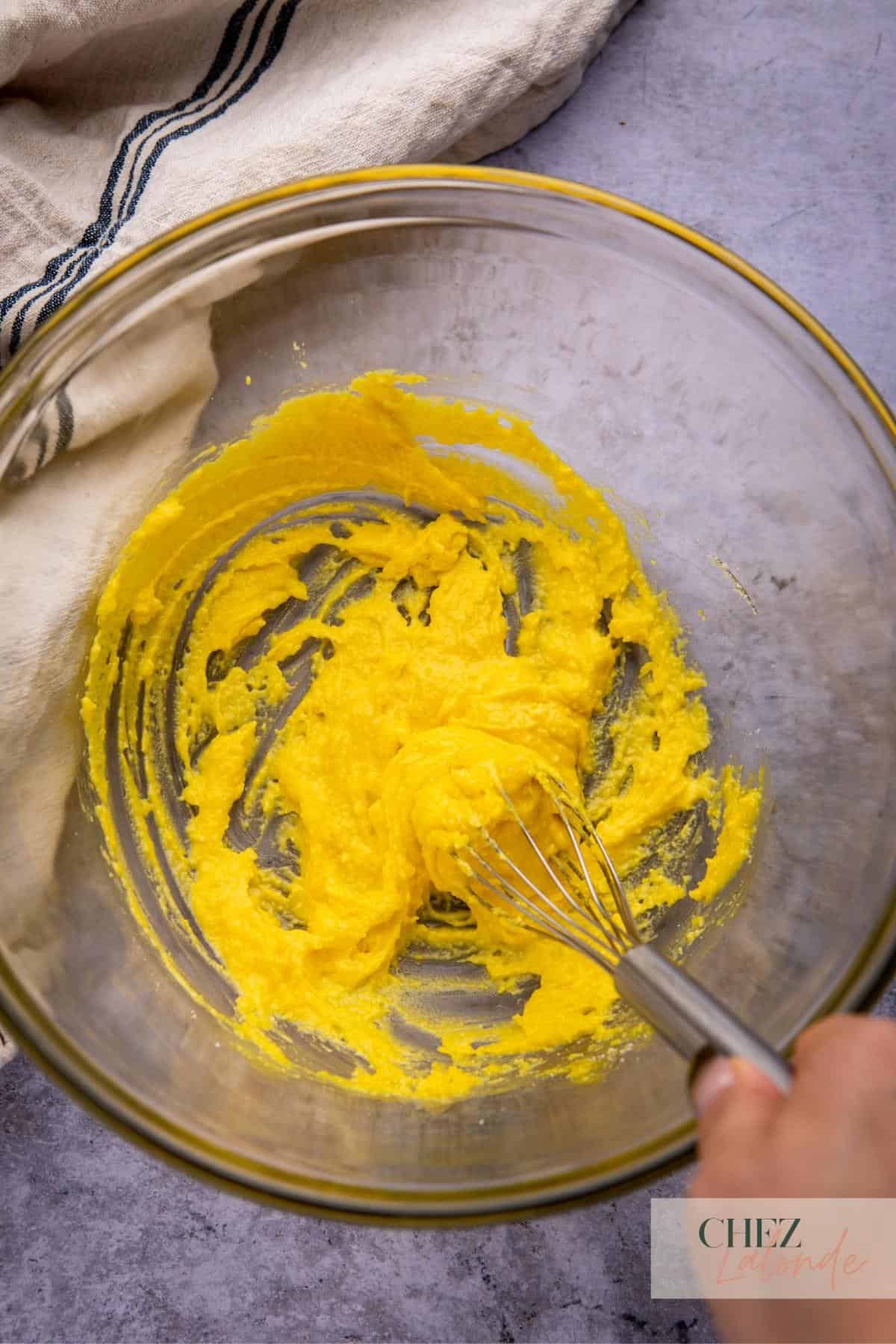
Step 6 – To make the egg white, use a small hand mixer or a whisk to beat it for 3 to 4 minutes until it reaches a soft peak. Next, pour the beaten egg whites into the egg yolk and cheese mixture and gently fold the two mixtures with a spatula until well combined. The egg and cheese sauce is now done. Set the mixture aside.

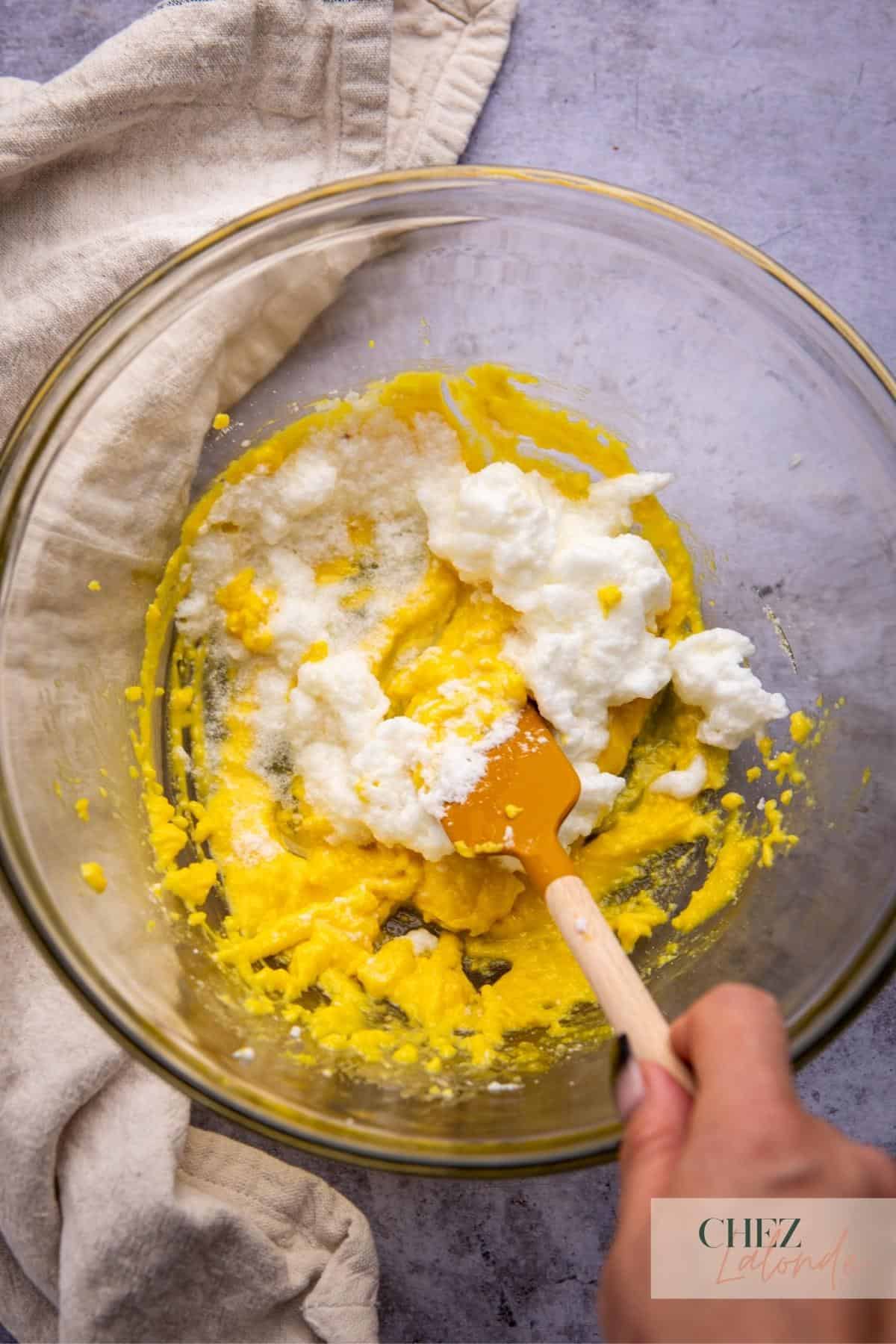

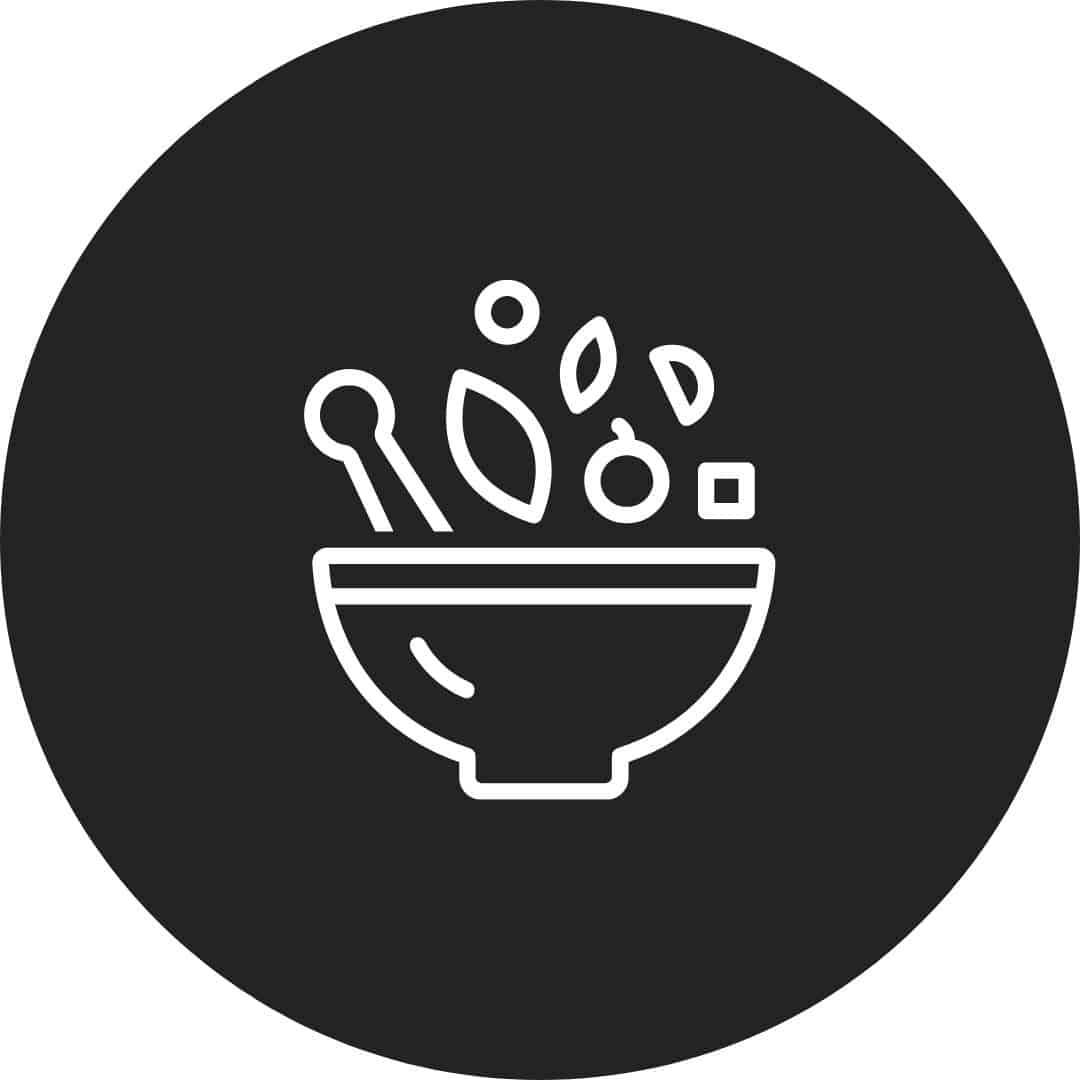
Note: The following steps are crucial, and you must move quickly. You need to cook the pasta and guanciale simultaneously.
Cooking the pasta.
Step 7 – Add ¼ cup of sea salt to the water in a large pot and bring it to a boil. Cook the pasta you choose according to package instructions until it’s al dente. First, reserve half a cup of pasta water for later use, then drain the pasta.
Cook and sear the Guanciale
Step 8 – It’s time to prepare the guanciale as the pasta begins to cook. Begin by heating a large frying pan on low heat. Then, add the guanciale into the pan without any additional oil. Keep a close eye on it to prevent overcooking or burning. The fat will render out and create its oil as the guanciale cooks. Once the fatty parts become translucent and the meaty parts turn golden brown, remove the guanciale from the frying pan, set aside, and reserve the flavorful oil dripping for the next step.
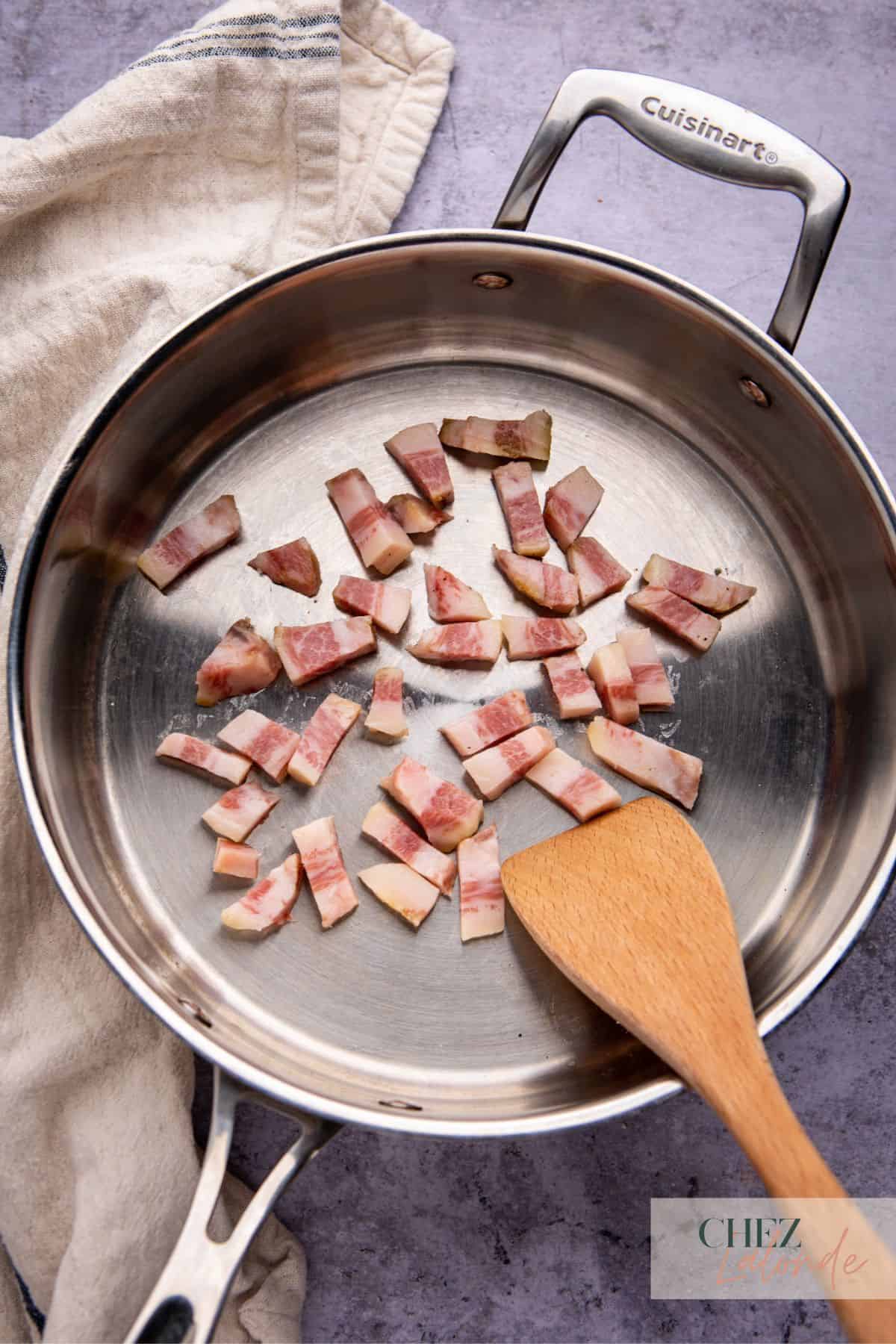
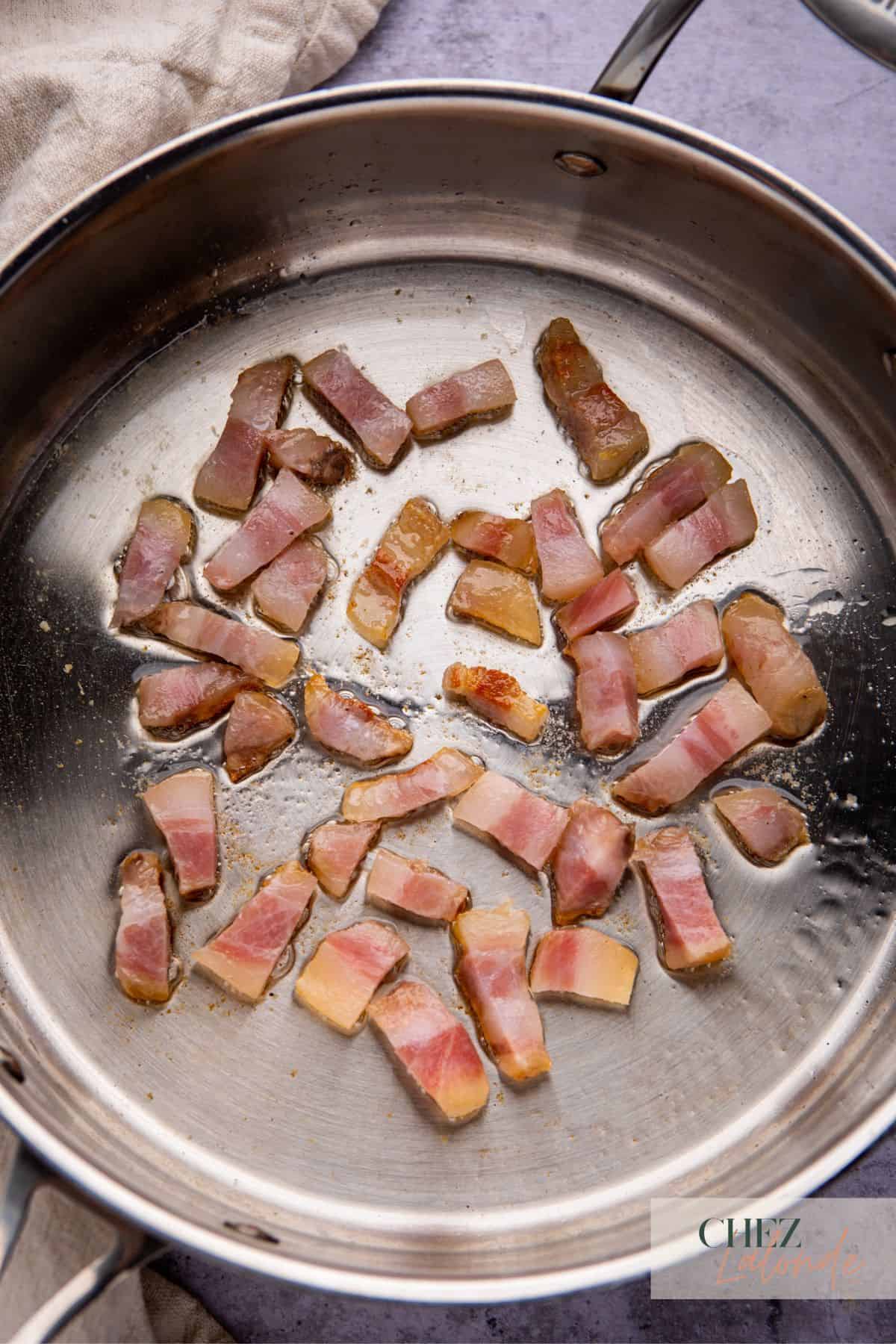
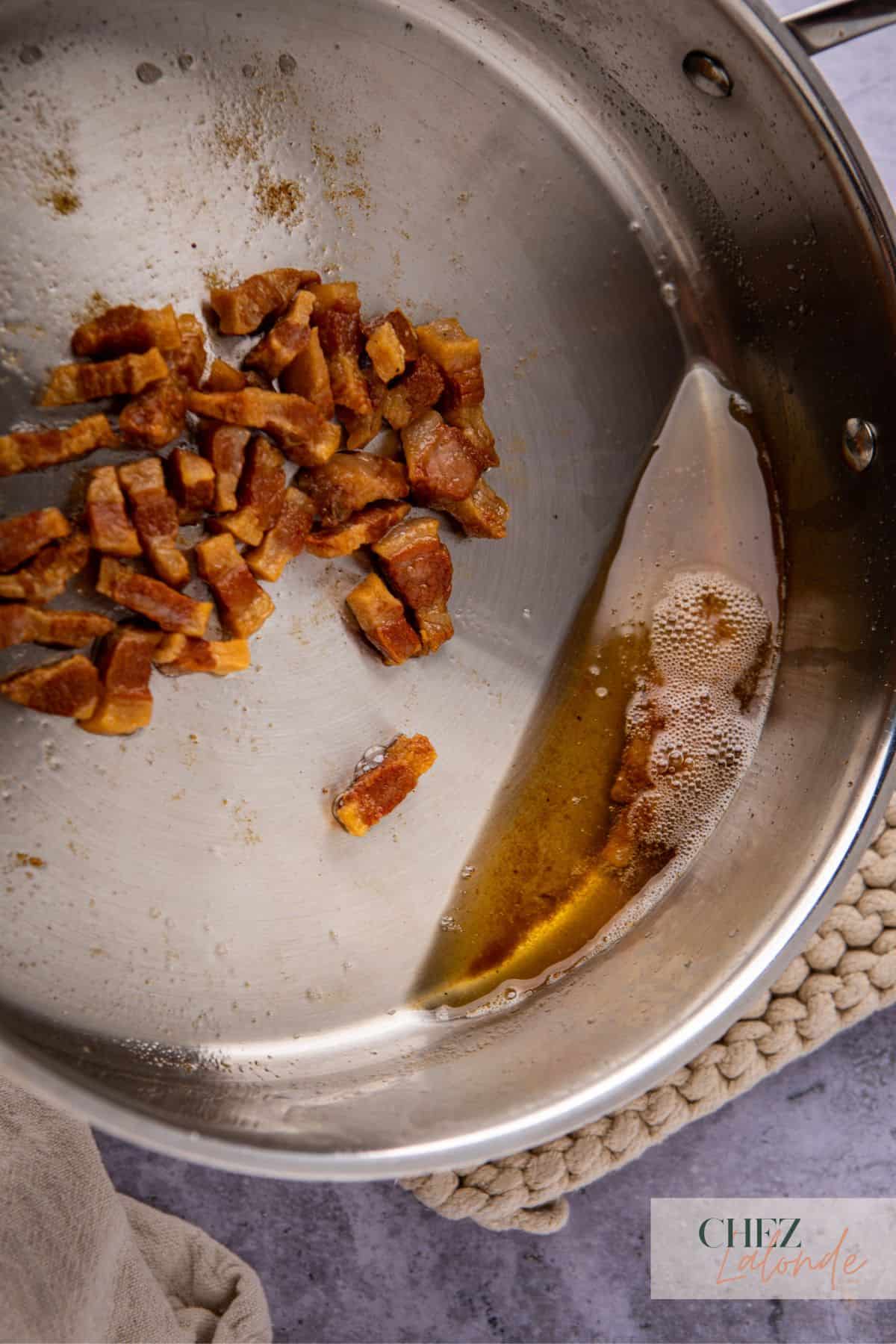
Assemble the dish.
Step 9 – The guanciale and pasta should be ready simultaneously. The assembly process requires speed as the dish cools quickly. First, reserve half a cup of pasta water, drain the pasta in a colander, and return it to the same large frying pan used to cook the guanciale. Over low heat, use a thong to mix the pasta with the oil drippings to enhance the flavor for approximately 1 minute.
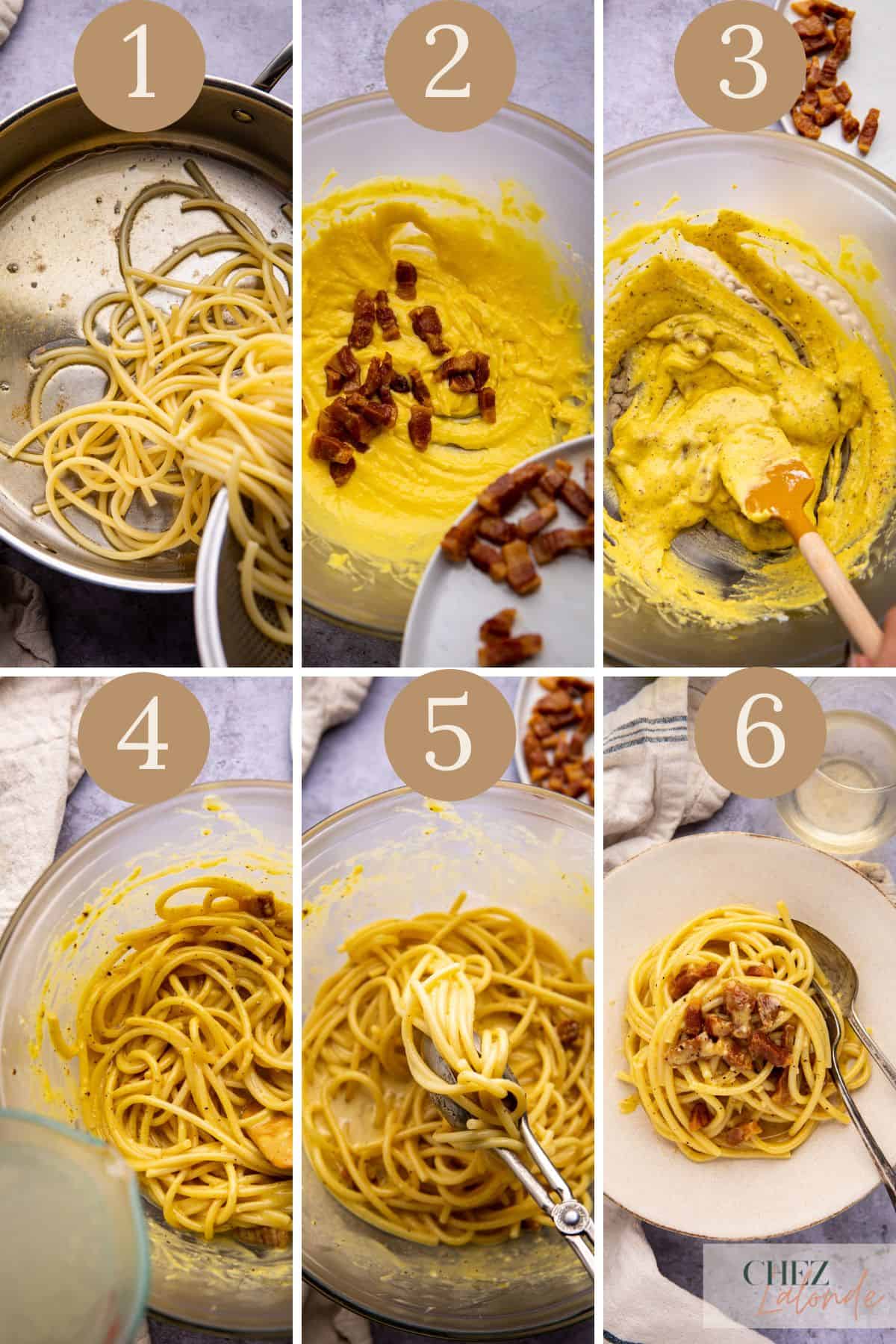
Step 10 – Add half of the cooked Guanciale and the crushed black pepper to the bowl containing the egg and cheese mixture prepared earlier. Mix well. Now, quickly add the cooked pasta to the egg, cheese, and guanciale sauce and mix everything together swiftly. It is important to complete this step quickly to avoid scrambling the egg mixture. If the mixture is too dry, slowly add pasta water, a tablespoon or two at a time, until you reach your desired consistency.
Step 11 – The dish is complete. Finish by adding the remaining cooked Guanciale, garnishing on the pasta, and grating additional Pecorino Romano or Parmigiano Reggiano cheese. Then, savor and enjoy!
Buon appetito!
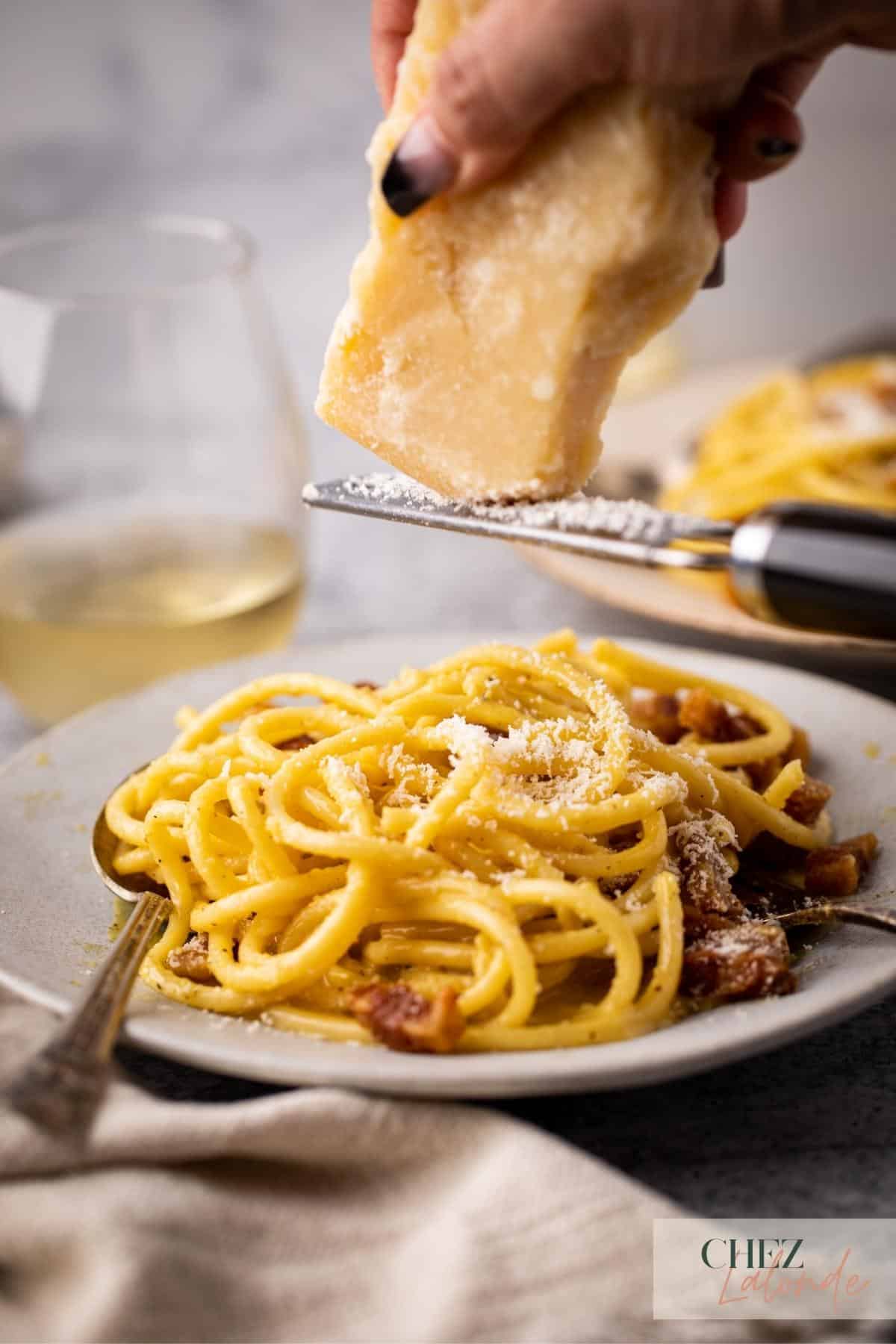

Helpful tips for perfect results
- Never cook Guanciale on high heat – To prevent bitter and unpleasantly charred Guanciale, cook it slowly on low heat. Overcooking can affect the overall taste of the dish. Additionally, heating oil to high temperatures can break it down and form harmful compounds, increasing cancer risk.
- Use the right cheese – Don’t swap out Pecorino Romano or Parmigiano Reggiano for any other cheese, especially not parmesan or mozzarella. It’s not the same, and it will alter the final outcome. Also, it’s always better to get good quality cheese in a block and grate it at home. This way, you can adjust the texture and size to your liking. The finer the cheese, the easier to mix with the egg yolks.
- Use Pasteurized Eggs – If you love raw egg-based recipes, you might wonder if consuming raw eggs is safe due to the risk of Salmonella. But don’t worry, I’ve done the research for you and have good news. Pasteurization is a technique that can eliminate any potential microbial growth in eggs, including Salmonella, without cooking the egg or compromising its nutritional content. In fact, I’ve written a blog post about “How To Use Sous Vide To Pasteurize Eggs at Home” to help answer any questions you may have. Whether you choose to buy pasteurized eggs from the store or pasteurize your own at home, you can safely enjoy your favorite raw egg dishes, including this delectable pasta recipe.

Disclaimer: If you have any illness or are pregnant, I suggest you skip this Carbonara recipe and opt for Cacio e pepe or some of my other pasta recipes on my blog, such as Chicken with Sun-dried tomato pasta or Spaghetti with meat sauce that doesn’t contain raw eggs.
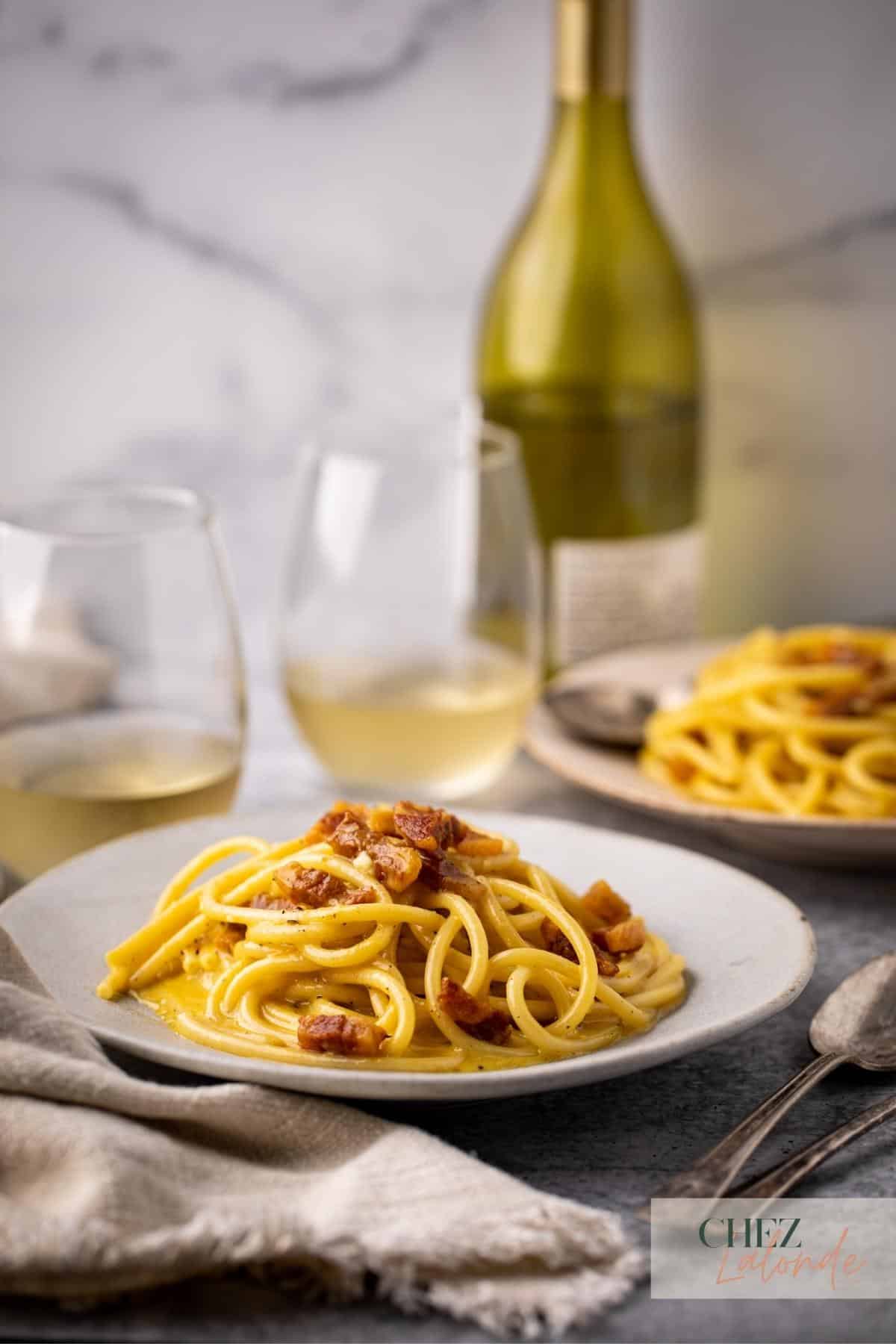
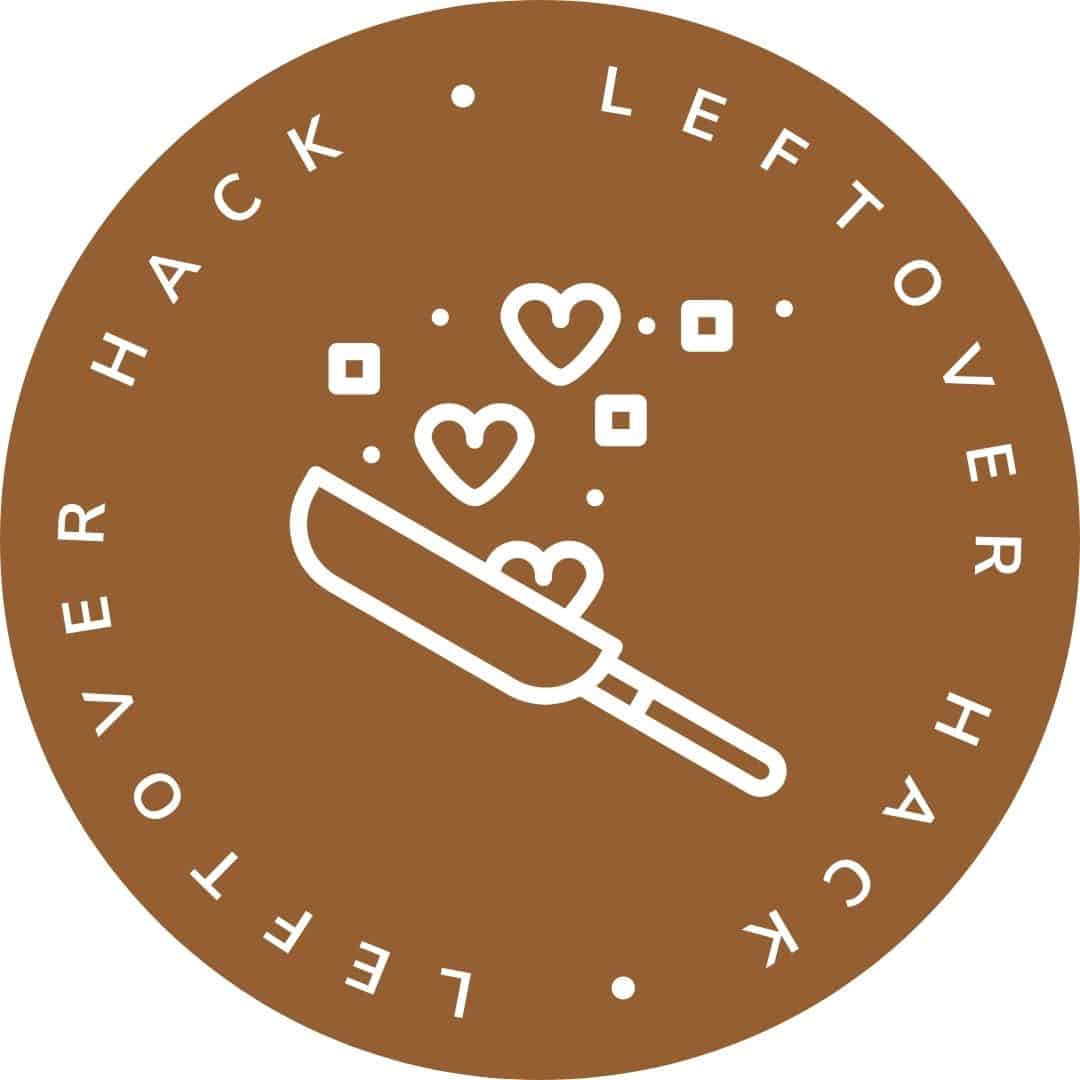
How to store and reheat your pasta dish
Carbonara pasta is one of those dishes that is best enjoyed fresh and hot. It tends to cool down quickly, so serving it immediately after cooking will get you the best taste and outcome. However, if it cools down and you want to warm it up. The best way is to use the Sous Vide method. It can warm up the pasta thoroughly without ruining the velvety egg sauce.
Using Sous Vide to reheat your dish:
- Step 1: Put your cooked carbonara pasta in a Ziploc or vacuum-sealed bag.
- Step 2: Insert your Sous Vide machine in a pot of water and set your machine to 130F/ 54C.
- Step 3: Once the water bath reaches the right temperature, insert your sealed bag of pasta into the heated water bath and Sous Vide for 20 minutes. Once it is warmed up and it is ready to eat.
Suppose you are unfamiliar with the Sous Vide technique. Visit my blog post about “Sous Vide Filet Mignon” to learn more about this useful French culinary technique.
**This is the best way to reheat your Carbonara without ruining it. I have tested it at home for you.**
Caution: Do not freeze or Microwave:
Since this pasta contains raw eggs and cheese sauce, it’s not freezer or microwave-friendly. If you try to reheat it in the microwave, the egg sauce will crumble and ruin the dish.

FAQs about Carbonara Pasta:
For even more delicious Italian recipes, you may like these:

Authentic carbonara pasta is a dish steeped in tradition and flavor, and it is not difficult to see why it has become such a beloved staple in Italian cuisine worldwide. After reading this post, are you ready to skip the cream and embrace this traditional Italian Pasta? With just six simple ingredients, unique culinary techniques, and some patience, Whether you are a seasoned chef or culinary newbie, I am sure you can also make this mouthwatering restaurant-style pasta dish to wow your loved ones.
Buon appetito!
If you love authentic Italian cuisine, you won’t want to miss my latest recipes and culinary adventures. Stay connected with me to take your cooking skills to the next level! Follow this blog and my social media pages for the latest updates, recipes, and cooking tips.
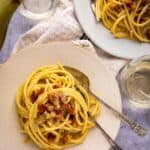
Authentic and Classic Carbonara pasta with No Cream
- Total Time: 40 minutes
- Yield: 2 servings 1x
Description
Try our simple and delicious carbonara recipe. Made with six basic ingredients without a single drop of cream insight! This traditional dish is a staple in Italian cuisine. Discover the history, simple ingredients, and cooking techniques to master this classic recipe. This authentic recipe will surely make the Italians proud.
Ingredients
200g Bucatini (or other Pasta of your choice)
120g Guanciale
2 Pasteurized egg Whites
30g Finely grated Pecorino Romano cheese
30g Finely grated Parmigiano Reggiano cheese
1/2 Tablespoon whole black peppercorns
Instructions
Trim and prepare the Guanciale –
Step 1 – Take the guanciale out of its packaging and remove imperfections, such as the skin and any gray discoloration part. Cut the cured meat around half an inch thick and into 1 to 1.5 inches long strips.
Toast the black peppercorns –
Step 2 – Heat a small frying pan on low heat and add whole peppercorns. Toast the peppercorns for 30 to 45 seconds or until fragrant. You then crush the peppercorns in a mortar and pestle or put them in a ziplock bag, and use a meat tenderizer or rolling pin to crush them.
Grate the cheese –
Step 3 – Use a Microplane tool to finely grate both Pecorino Romano and Parmigiano Reggiano cheese blocks and use the cooking scale to measure the appropriate quantity needed for the recipe.
Prepare the egg sauce –
Step 4 – Separate the four eggs’ yolks and whites once the cheese is grated. We will only use two egg whites and four egg yolks for this recipe, and you can save the remaining egg white for later use in other recipes.
Step 5 – Using a clean bowl, whisk the finely grated Pecorino Romano and Parmigiano Reggiano cheeses together with the separated egg yolks. Mix until it forms a paste-like consistency.
Step 6 – To make the egg white, use a small hand mixer or a whisk to beat it for 3 to 4 minutes until it reaches a soft peak. Next, pour the beaten egg whites into the egg yolk and cheese mixture and gently fold the two mixtures with a spatula until well combined. The egg and cheese sauce is now done. Set the mixture aside.
Cooking the pasta –
Step 7 – Add ¼ cup of sea salt to the water in a large pot and bring it to a boil. Cook the pasta you choose according to package instructions until it’s al dente. First, reserve half a cup of pasta water for later use, then drain the pasta.
Cook and sear the Guanciale –
Step 8 – As the pasta begins to cook, it’s time to prepare the guanciale. Begin by heating a large frying pan on low heat. Then, add the guanciale into the pan without any additional oil. Keep a close eye on it to prevent overcooking or burning. The fat will render out and create its oil as the guanciale cooks. Once the fatty parts become translucent and the meaty parts turn golden brown, remove the guanciale from the frying pan, set aside, and reserve the flavorful oil dripping for the next step.
Assemble the dish –
Step 9 – The guanciale and pasta should be ready simultaneously. The assembly process requires speed as the dish cools quickly. First, reserve half a cup of pasta water, drain the pasta in a colander, and return it to the same large frying pan used to cook the guanciale. Over low heat, use a thong to mix the pasta with the oil drippings to enhance the flavor for approximately 1 minute.
Step 10 – Add half of the cooked Guanciale and the crushed black pepper to the bowl containing the egg and cheese mixture prepared earlier. Mix well. Now, quickly add the cooked pasta to the egg, cheese, and guanciale sauce and mix everything together swiftly. It is important to complete this step quickly to avoid scrambling the egg mixture. If the mixture is too dry, slowly add pasta water, a tablespoon or two at a time, until you reach your desired consistency.
Step 11 – The dish is complete. Finish by adding the remaining cooked Guanciale, garnishing on the pasta, and grating additional Pecorino Romano or Parmigiano Reggiano cheese. Then, savor and enjoy!
Notes
The ratio for this recipe is two yolks and one egg white per person.
Do not discard the fatty part of guanciale as it adds flavor to the dish. Fat is an essential ingredient that gives the dish its distinct rich taste.
To avoid lumps and ensure that the cheese blends well with the eggs, it’s important to grate the cheese finely.
You need to move quickly. You need to cook the pasta and guanciale simultaneously.
- Prep Time: 20 minutes
- Cook Time: 20 minutes
- Category: Entree
- Method: Stove top
- Cuisine: Italian
Keywords: Carbonara Pasta, Italian, Guanciale, Authentic, Classic, Pecorino Romano, Parmigiano Reggiano, Black Peppercorn, Pasteurized eggs

